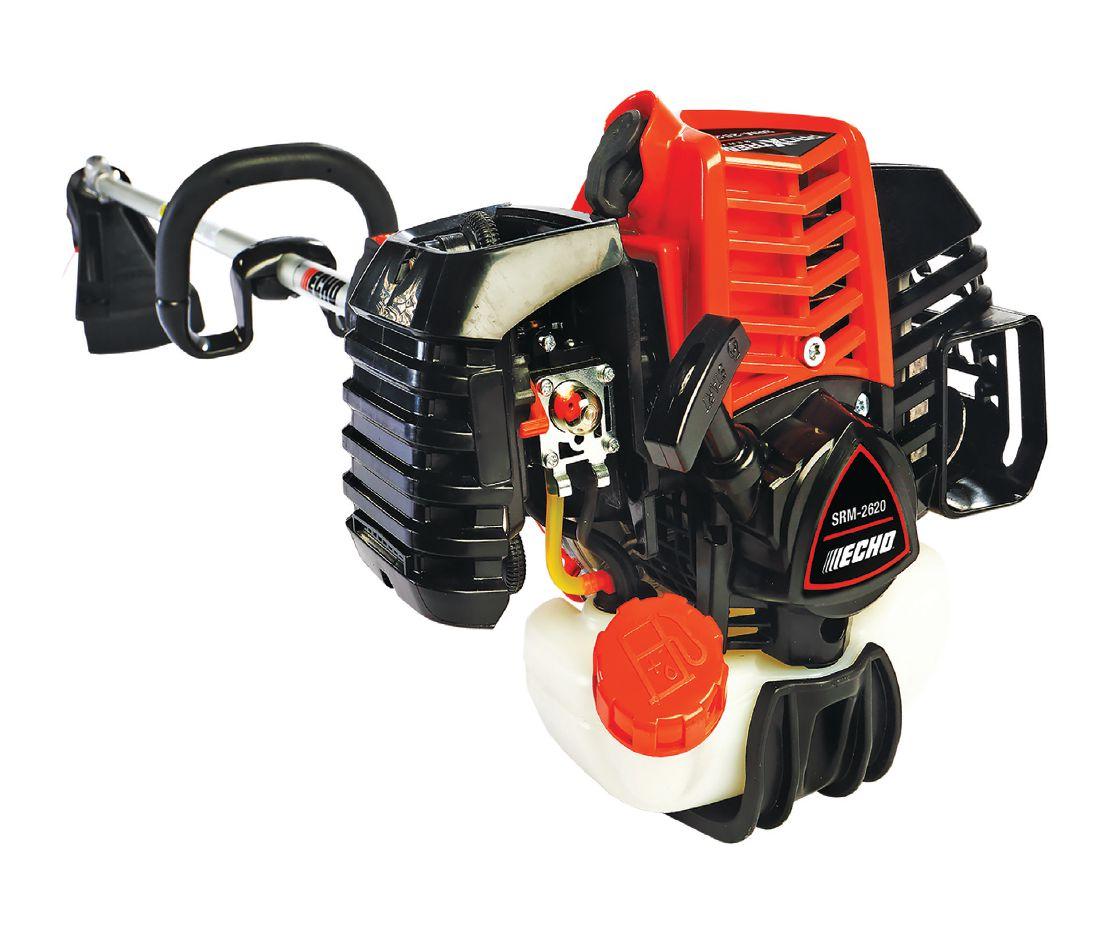

STIHL KM 131 R KombiSystem
When you are on the job, which do you value more: power or versatility? If you answered “both,” then take a look at the KM 131 R KombiEngine.
This multi-tasking tool is the most powerful in the STIHL KombiSystem family and features a low-emission engine, delivering 30% longer runtimes compared to the KM 130. It’s compatible with over a dozen KombiSystem attachments, giving you incredible utility in a fraction of the trailer space compared to stand-alone tools. The KM 131 R is also easy to operate, featuring a semi-automatic choke lever, one-touch stop switch, anti-vibration system and a specially designed quick-release coupling system for easy switching between attachments. The only thing easier than using the KM 131 R is leaving your older, bulkier power tools behind.
• Most powerful KombiEngine, over 30% more engine power than the KM 130
• IntelliCarb™ compensating carburetor automatically adjusts fuel/air ratio to maintain engine
• Vertical pleated air filter for better filtration and extended service life
SWITCHABLE ATTACHMENT SYSTEMS THAT OFFER ENDLESS JOB VARIETY
With the STIHL KombiSystem, you only require one powerhead for your hedge trimming, edging, pruning, cleaning and cultivating needs. Each attachment slides into the KombiEngine effortlessly and is secured via a quick-release coupling system. Just slide, twist and you’re ready to go. This system not only saves on storage space, it completely eliminates the additional fuel cost, maintenance and headache that comes with owning a fleet of yard tools. Best of all, the STIHL KombiSystem is lightweight and comfortable to use, making it the ultimate portable powerhouse.
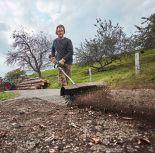
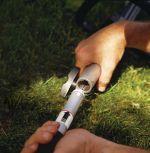



NEW PRO-FLEET COMMERCIAL LANDSCAPE PROGRAM
STIHL’s NEW Pro-Fleet Commercial Landscape Program is designed to provide commercial landscapers a volume discount on major purchases of 8 or more landscaping power tools per sales transaction. Visit your STIHL Dealer today to find out more and take advantage of the savings!
QUALITY AT WORK FOR OVER 90 YEARS.

For over 90 years, STIHL has been a world market leader and innovator in outdoor power equipment. German engineered products featuring the latest pioneering technologies make STIHL the preferred choice for professionals, consistently providing uncompromising quality. STIHL products are only available at independent STIHL Dealers who provide personal advice and expert service. Thank you for the continuous support and for making STIHL the brand you trust.
* “#1 Selling Brand in Canada” is based on an independent market share analysis of gasoline-powered handheld outdoor power equipment from 2016. Source: TraQline Canada.

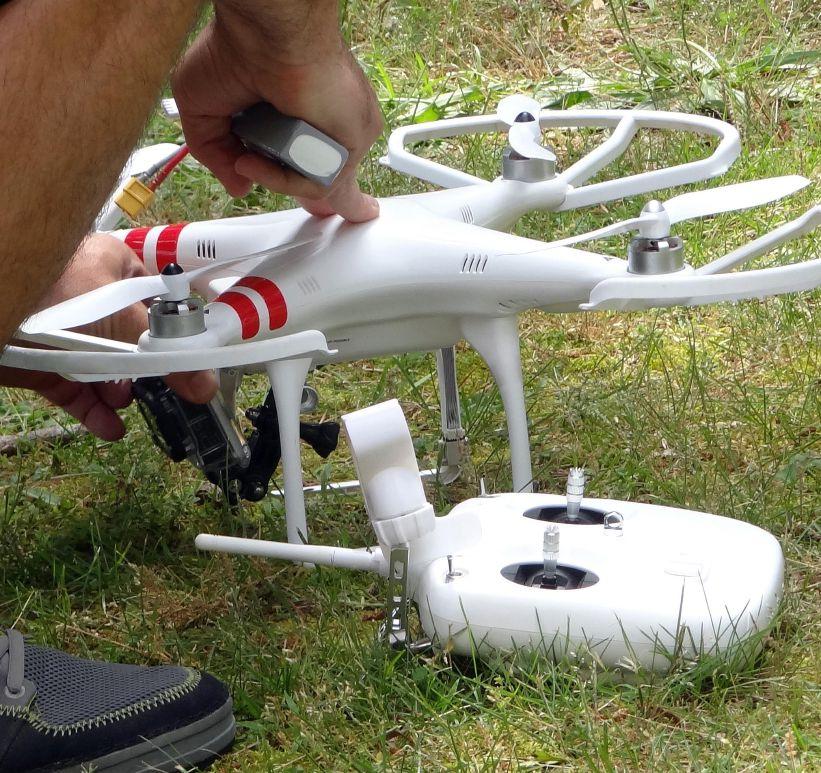


04 | From the editor
New technology helps to offset dwindling budgets
42 | Duffer
The disappearing art of everyday etiquette
COVER STORY Drones may be golf’s next big breakthrough
The small flying machines have many applications on a golf course, including the means to spot deficiencies and save inputs and resources.
BY MIKE JIGGENS
Surrey, B.C. man named sports turf manager of the year
Seasoned veteran becomes first outside Ontario to earn designation.
BY MIKE JIGGENS
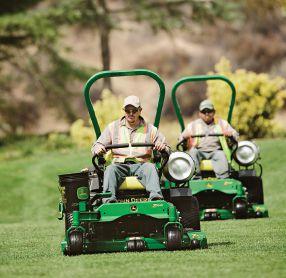

DEPARTMENTS
06 | In the news Landscaper outed for not doing his job
36 | Health and safety Mind the heat and humidity this summer
ON THE COVER Drones are making their mark on
courses, helping superintendents. See story on page 8.

By Mike Jiggens
New technology and falling budgets
In these days of dwindling budgets, when labour tends to be the first casualty, golf course superintendents are increasingly challenged to produce consistent playing conditions with less.
But then along comes some new form of technology that makes certain jobs less cumbersome or requiring fewer inputs, and things begin to even themselves out once more.
Smarter irrigation systems have allowed golf courses to save on their water consumption. More recently, moisture probes are enhancing water conservation that much more.
More recently yet is the introduction of the Air 2G2 machine that injects compressed air into the soil to a depth up to 12 inches, causing a fracturing effect of the compacted root zone. What makes it so attractive is that it causes no surface disruption and leaves the turf immediately playable.
The procedure is less laborious than core aerating, leaving more time for other tasks to be completed, and time is money.
What has the industry all abuzz today are drones and the versatility they bring to golf. There are several constructive things these miniature flying machines can do that can result in savings of time, labour and inputs.
There is a cost associated
with drones and a skill set required for their operation. Golf courses willing to push past these obstacles can reap the benefits. When drones are equipped with multi-spectral cameras, they provide mapped data that shows where water can be better managed, where fertilizer use can be optimized and where pesticides can be better utilized. All of this translates into savings that allow golf courses to do more with less.
An advocate of drone use of note is Thomas Bastis, superintendent at the California Club at San Francisco, who shared his insights with at least two Canadian audiences so far this year. In March, he spoke in Victoria, B.C. at the
Drones are apt to be an ideal fit and some superintendents have embraced the technology
Canadian Golf Course Management Conference and later addressed a session in Guelph, Ont. that was organized by first-year turf management students from the University of Guelph. Bastis, in fact, is the university’s superintendent in residence this year.
More of what Bastis has to say about drone technology can be found on page 8 of this issue.
Drones may not be for everyone. First of all there is an expense attached to them,
and some superintendents might be reluctant to want to send a not-so-cheap asset into the air that they fear might fall to the ground, crash into a tree or be attacked by a bird of prey. But, like most other electronic contraptions, prices are apt to fall as demand rises. There are other superintendents yet who are old school and prefer their own trusted methods and aren’t quite comfortable venturing into such new territory.
There are also federal Ministry of Transportation regulations to keep in mind, the most significant of which is that drones cannot be operated if they are within a certain distance of an airport. There are some golf courses located adjacent to major airports, and strict regulations would prevent their use.
At the majority of golf courses in Canada, drones are apt to be an ideal fit, and some superintendents have long since embraced the technology and are helping to spread the message.
Drones are not just friends of the superintendent. The course owner or general manager will find them useful as well, and this could lead to a sharing of costs between the course itself and its maintenance department. For promotional purposes, drones can be outfitted with a high-definition video camera and flown from tee to green of each hole, giving golfers an idea of how to play the hole and a look at the hazards and other obstacles to avoid. The video can then be posted on the golf course’s website.
www.turfandrec.com
Editor Mike Jiggens mjiggens@annexweb.com
National Advertising Manager Nashelle Barsky 905-431-8892 nbarsky@annexweb.com
National Account Manager Sarah Otto sotto@annexweb.com
Account Coordinator Barb Comer 519-429-5176 bcomer@annexweb.com
Circulation Manager
Anita Madden 416-442-5600 ext 3596 madden@annexbizmedia.com
Group Publisher Scott Jamieson sjamieson@annexweb.com
COO Ted Markle tmarkle@annexweb.com
President & CEO Mike Fredericks
Printed in Canada ISSN 1186-0170
PUBLICATION MAIL AGREEMENT #40065710
SUBSCRIPTION RATES
Published 7 times a year – Jan/Feb, Mar, Apr/May, Jun, Jul/Aug, Sept/Oct, Nov/Dec Canada – 1 year $33.00; 2 year $43.00 3 years $53.00 (plus applicable taxes HST 86717 2652 RT0001
CIRCULATION
email: blao@annexbizmedia.com
Tel: 416.442-5600 ext 3552 Fax: 416.510.5170 Mail: 80 Valleybrook Drive, Toronto, ON M3B 2S9
Occasionally, Turf and Recreation will mail information on behalf of industry related groups whose products and services we believe may be of interest to you. If you prefer not to receive this information, please contact our circulation department in any of the four ways listed above.
Annex Privacy Office privacy@annexbizmedia.com
Tel: 800.668.2374
No part of the editorial content of this publication may be reprinted without the publisher’s written permission © 2017 Annex Publishing & Printing Inc. All rights reserved. Opinions expressed in this magazine are not necessarily those of the editor or the publisher. No liability is assumed for errors or omissions. All advertising is subject to the publisher’s approval. Such approval does not imply any endorsement of the products or services advertised. Publisher reserves the right to refuse advertising that does not meet the standards of the publication.






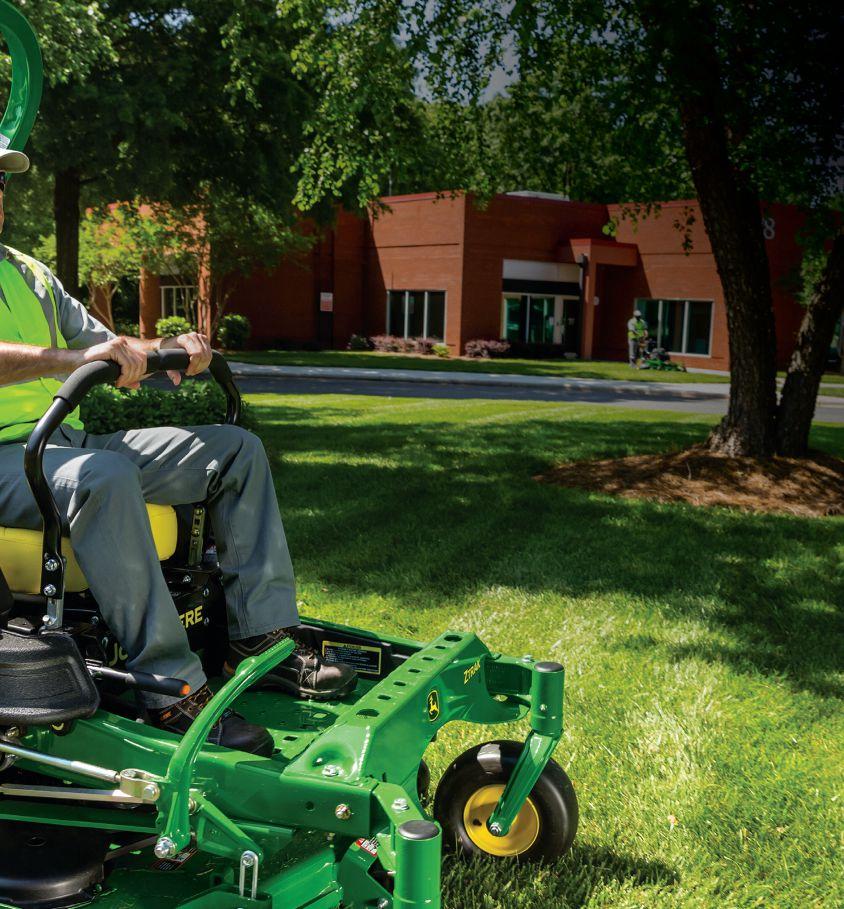








Landscaper outed for not doing his job
Global News aired a consumer report in May, alleging that a Mississauga, Ont. landscape contractor received money from customers, but failed to do the work.
Jerry DiCesare, owner of Jerry’s All Season Landscaping, was first investigated in 2014 and has come under fire again for the same reasons. The company has been in business 27 years, according to DiCesare’s business card. – MIKE
JIGGENS
B.C. landscaper helps local homeless shelter
A Kelowna, B.C. landscaping company has donated $3,000 to assist a local homeless shelter. Employees of Creative Roots Landscaping donate an hour of their wages to help with such charitable causes as the Inn From the Cold.
The Creative Roots “Give Back Program” is an extension of the company’s management method that engages and educates employees. By late April, the program had generated more than $118,000 in cash and in-kind donations.
“We want to make a difference in people’s lives,” said company owner Ryan Markewich. – MJ
Anonymous donation to help wetland project
An anonymous donation of $75,000 will significantly help in the construction of a wetlands project at a Kamloops, B.C. park. The work at Dufferin Park will include drainage improvement and strategies to eradicate mosquito breeding grounds. Kamloops has about $102,000 in grants and donated funds for the project. – MJ
the number of years
Jerry’s All Season Landscaping has been in businesss

Industry supplier picks up tab for golf courses to adopt dogs
1 hour the amount of time in wages each employee donates to charity
Allturf Ltd. of Innisfil, Ont., a supplier of golf and turf products, believes golf courses and dogs go hand in hand, whether it’s a matter of dogs chasing unwanted geese away from the property or simply to serve as a friendly companion to staff and golfers. Allturf has joined forces with local SPCA branches to launch a new program called Allturf Homes for Hounds.
Allturf has offered to pay the cost of a dog’s adoption from local SPCA branches so that its new home becomes a golf course’s turf maintenance department. The company will look after adoption costs, initial vaccinations and paper work.
“We believe that golf courses and dogs go hand in hand, whether you envision your newest member greeting golfers or keeping geese at bay or just being there to receive friendly pats,” Allturf tweeted. “We would
like to facilitate the process for any golf course looking to become a forever home for a dog. On any given day when you visit our offices, you will see any number of dogs roaming the hallways and visiting the boardroom.”
The website spells out for prospective adopters of dogs and cats what to expect when adopting a pet. It suggests plenty of research be done before making an adoption and encourages love, patience and a sense of humour to ensure the animal and its owner forms a bond for life.
Meet Your Match evaluates an animal’s behaviour and interests and matches them to an adopter’s preferences.
Anyone interested in taking advantage of the program should email emily@allturf.ca. For more information about dog adoptions, visit www.meetyourmatch. ontariospca.ca. – MIKE
JIGGENS
Find the latest turf-related news, stories, blogs and analysis from across Canada, and access our forum . . . www.turfandrec.com
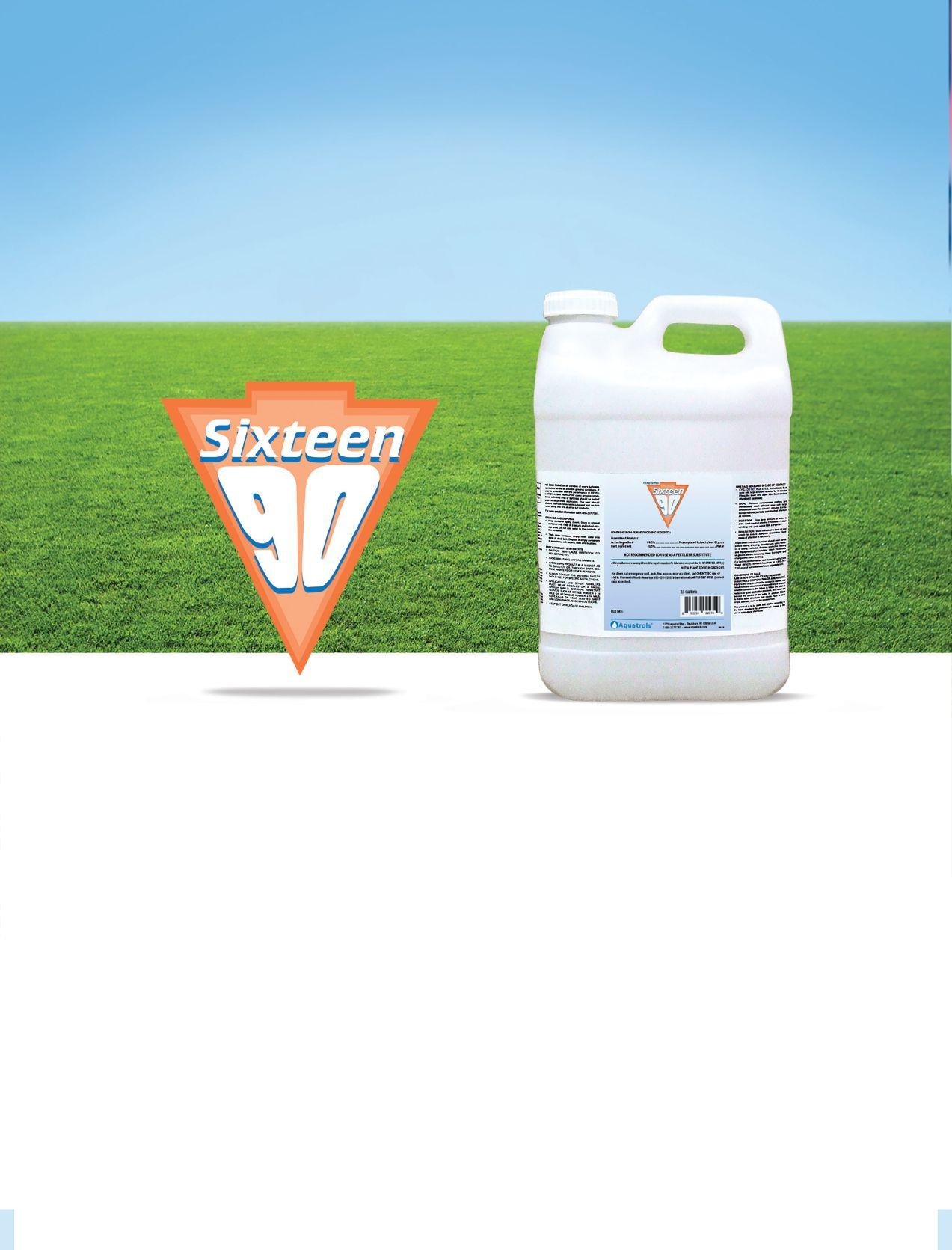
We are proud to introduce Sixteen90 TM, a proven soil surfactant chemistry specifically formulated to give you outstanding water management performance, with built-in flexibility to best fit your course’s unique challenges and your existing turf management practices.

•
•
•
•
challenging season at BMO Field
Technology provides multitude of valuable information for superintendents
By Mike Jiggens
The tools superintendents use to maintain their golf courses continue to evolve with each passing year, and much of what is available today can help save significant amounts of time, labour, inputs, resources and money. One such technological wonder that has recently left its mark on the industry is the drone, which has several useful applications on a golf course.
Thomas Bastis, superintendent at the California Club in San Francisco, is an advocate of drone use and shared his experiences with the technology during a student-organized spring golf symposium at Guelph, Ont.’s Cutten Fields. First-year turfgrass management students from the University of Guelph organized the event.
Bastis, who has been given the honourary title of superintendent in residence at the University of Guelph, ventured into the world of drones only a few years ago and claims the remote-controlled flying machines are a breakthrough in golf course management. He
had also spoken about drone technology in March at the Canadian Golf Course Management Conference in Victoria, B.C.
Camera-equipped drones were originally used on golf courses to record video of each hole from tee to green for television purposes. Televised PGA Tour events had previously presented home viewers with flyover footage shot from a helicopter, but securing a helicopter’s services was expensive and the required footage usually had to be recorded several weeks in advance of a tournament. Today, lightweight high-definition cameras can be affixed to a drone, allowing it to record the same type of footage at a much cheaper cost, and scheduling flyovers has become more convenient because operating drones doesn’t require trained pilots.
Bastis said there is a “storytelling” aspect to drones he called “amazing.” Their flights can be preprogrammed to achieve different shots.
He said he has used six different types of drones at the “Cal Club,” ranging in price from $39 to $3,000. The cheaper model is small enough to fit into the palm of his hand and is ideal for training purposes, he said, adding if it gets smashed up during operator flight training, its owner isn’t out a lot of money.
One of the drone models he has used requires two people to operate. One person using a tablet controls its flight path while another person operates the camera fitted to its underside. The
two-person operation is effective, Bastis said, because a single operator might otherwise become distracted trying to manage both functions simultaneously, perhaps flying the unit into a tree or other obstacle.
All drones fly by the global positioning system (GPS) and are intuitive once airborne.
“If a 50-mile-per-hour wind comes in from the side, it will literally tilt itself and lean into the wind and try to keep itself at that GPS co-ordination,” Bastis said.
If the operator lets go of the joystick control, the drone intuitively knows where that individual is supposed to be. The controller connects to a home point using 14 to 20 satellites, enabling the drone to know where both the controller and home base are located.
“If it loses communication, it knows exactly where to come back,” he said, adding drones are able to travel a distance up to seven kilometres beyond the operator’s position.
A drone that loses communication with the operator can be instructed to fly to an altitude of 70 metres – equivalent in height to the tallest tree at the Cal Club – and then return “home.” The operator knows by the golf course’s GPS co-ordinates where he should and shouldn’t be flying a drone.
Drone operation regulations
Stricter government regulations associated with drone operation have been recently enacted with the growing popularity of the flying machines, both for hobby use and for

Drones may be golf ’ s next big breakthrough
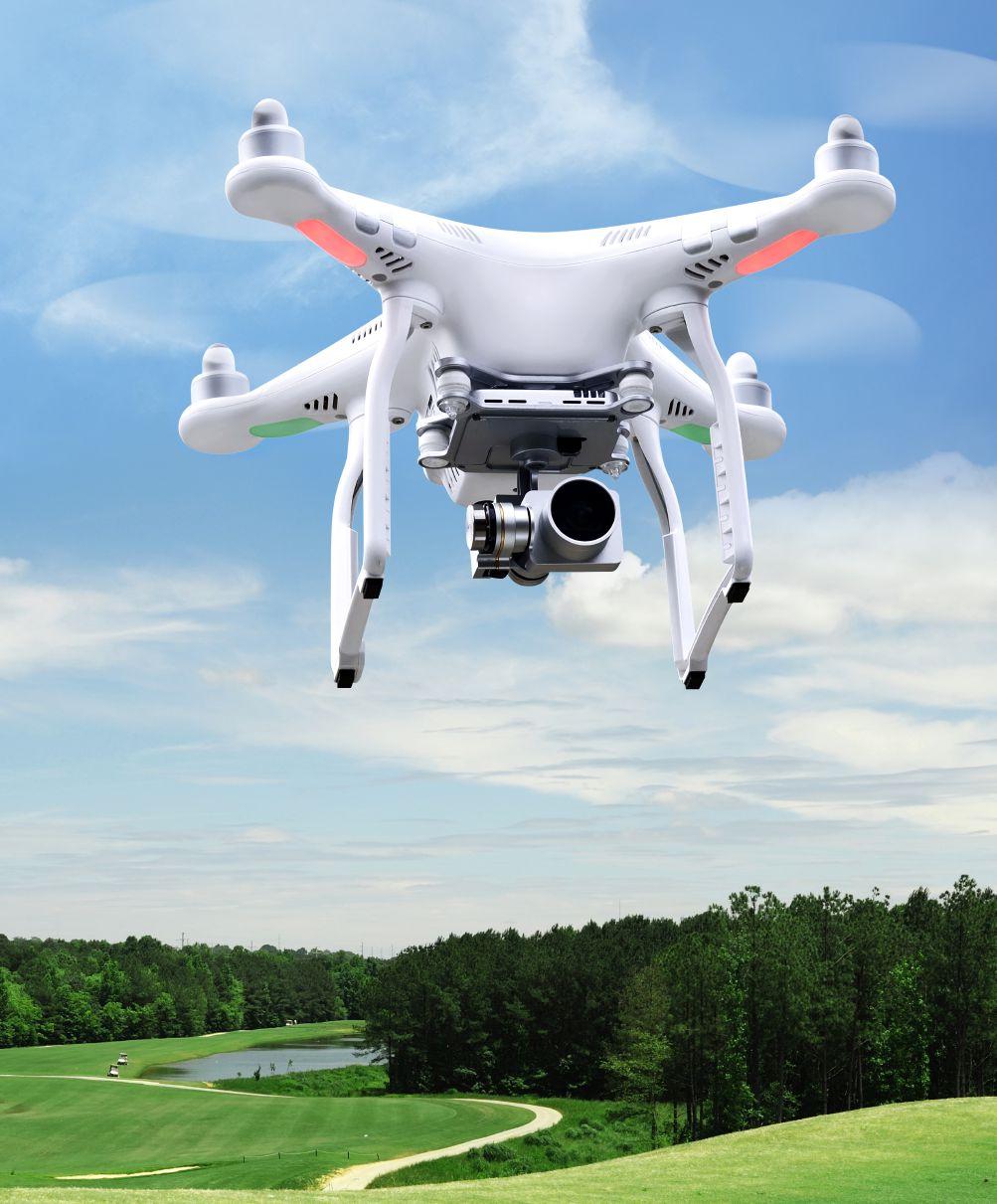
professional purposes. Drone manufacturers are being pressured to incorporate technology into their construction so that when they are turned on they will know if they are in the vicinity of an airport and will then be rendered incapable of flying in such an area. Bastis said he has found himself in situations where his drone would not operate due to its proximity to an airport. Drones are being programmed not to fly in such restricted zones, and the Cal
Club is located next door to a major airport.
“Geo fences” are being created to prevent drones from coming into close contact with aircraft.
In spite of a growing number of new regulations regarding drone operations, the flying machines have their place on golf courses and can assist superintendents in several constructive ways, Bastis said.
On a basic level, a drone can be used to pre-inspect a particularly tall
tree for disease or damage without forcing an arborist to make the potentially dangerous climb. Drones costing as little as $300 to $500 can be used for such a task, he said.
Drones can also be used to help resolve property line debates when neighbouring residents might overbuild onto an adjacent golf course property. Overhead photography paints more of a telling picture than sideways photography, Bastis said, adding the same technique can be
Why use drones on golf courses?
Reasons why drones are invaluable to golf course superintendents:
1. Optics from significant heights can spot problems on the course.
2. They can easily pinpoint damage from strong winds, including trees and fences.
3. After a heavy rain or early morning frost, they can determine when a course is playable.
4. They can detect if anyone has trespassed onto the course.
5. They can detect high and low moisture areas.
6. They can detect issues pertaining to the health of turfgrass.
7. They can help survey land areas to assisnt in golf course design and construction.
8. They can reliably check for uniformity in seeding.
used to document changing shapes and sizes of ponds and other features.
Overhead photography shows distinct colour variations of test plots in NTEP (National Turfgrass Evaluation Program) trials and is useful for showing club members the ongoing progress of an on-course construction project. He said the means to document a project’s progress through pictures speaks volumes more than chronicling such detail in words. During greens construction, it can help to better determine the direction of drainage patterns.
Bastis said he wished the technology had existed more than a decade ago when he undertook a greens renovation project of his own.
Aside from their photographic attributes, drones can be used to transport lightweight objects from one point to another. If a maintenance worker at the opposite end of the golf course from the turfgrass maintenance facility needed a fresh roll of trimmer line, one could be transported to him via drone “as the crow flies” rather than being driven in a golf cart along an array of cart paths that might wind in and out of wooded areas and up and down significant changes in elevation. The drone would save both time and fuel.
Saving time with drones
Drones have the greatest impact on visual inspection and are able to alleviate the time it takes to drive around every square foot of a golf course.
“It takes time to do that.”
Bastis said weather stations serve an important purpose on a golf course, but noted there are often microclimates on many courses that demand more specific readings. Moisture probes have helped in that regard in recent years by providing accurate moisture deficiency data, taking the guesswork out of visual inspection. The probes will provide the superintendent with a number to let him know if watering is required or not. The process still takes time, but flying overhead with a drone equipped with multi-spectral photography capabilities can produce an evapotranspiration (ET) map that will provide daily and even hourly data.
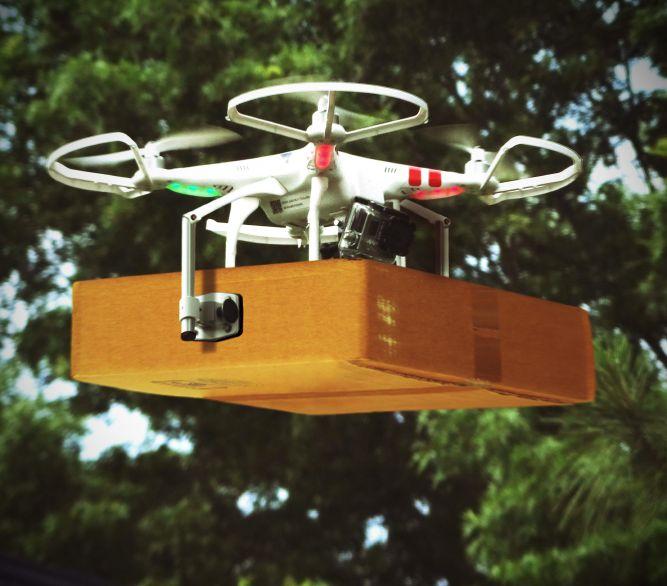
Because a drone flies by GPS, it can be programmed to fly in a consistent pattern, at the same altitude, in the same direction and at the same time.
“It flies a pre-programmed pattern all by itself.”
Bastis said the superintendent doesn’t have much to do in the process. The drone flies down the first fairway, makes a couple of “S” sweeps and then proceeds down the next fairway. It lands and data is automatically uploaded to the data company’s servers.
Information will be relayed to the superintendent’s tablet or cell phone that might indicate a certain percentage of the golf course is going south quickly and pinpoint the areas where attention is needed.
He said he can create his own maps that are sophisticated enough to provide accurate scale and precise distances between points. The maps provide him with the necessary information he requires for watering, providing consistency.
It rains regularly in the San Francisco area from November to March, but the remaining months are dry and irrigation is required daily.
“It’s feast or famine for us.”
The Cal Club has 2,700 sprinkler heads throughout the course that put out 57 million gallons of water a year.
“If I can save 10 per cent of that (through drone-driven mapping), we’re winning.”
‘The money in all of this is the analytics and what you do with that data’
Bastis said that although the technology does not yet exist, he believes the day will come when maps will be so sophisticated that they will show where specific turfgrass species grow, allowing them alone to be targeted for such practices as spraying.
“The money in all of this isn’t the drone. The money in all of this is the analytics and what you do with that data.”
He cautioned that superintendents must fully
understand the regulations associated with drone use before going out and purchasing one. Canadian regulations, updated last January, are aimed at both recreational and professional use. When drones are operated for recreational purposes, they must fly at least nine kilometres away from all airports and must be in line of sight at all times.
“You cannot use the image transmitted by the drone to qualify as being in line of sight. You physically have to see the drone.”
If using a drone on a golf course or for real estate purposes, a waiver must be obtained from the Ministry of Transportation. If the drone weighs less than two kilograms, an application must be made for the waiver and the operator must abide by several rules. The operator must also have $100,000 in liability insurance and must state where the drone will be flown and its intended purpose. For drones weighing more than two kilograms, the same amount of liability insurance is required and the operator must undergo prop er training from a recognized training centre.
“The way they see it is you’re entering into air space. You need to be able to speak air talk.”
The operator must also be able to comprehend such matters as altitude, wind direction and sheers.
Bastis speculated there will be several notable advancements in drone technology in the coming years, but he also suspected operational regulations will become even more stringent.

Thomas Bastis


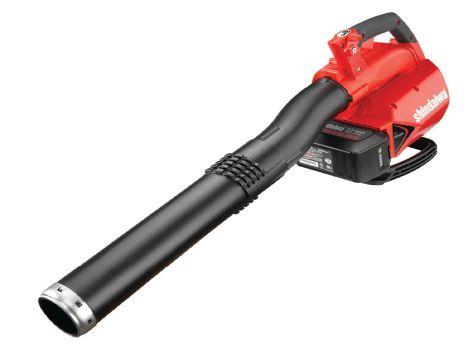






B.C. parks veteran claims high honour
Hugh Norris becomes first sports turf manager of the year from outside of Ontario
By Mike Jiggens
ABritish Columbia man has become Canada’s first sports turf manager of the year from outside of Ontario.
Hugh Norris, park facility operations manager for the City of Surrey, was selected for the honour in April by Sports Turf Canada.
“To say the least, I’m surprised,” he said. “It’s surprising, exciting and interesting, all at the same time.”
Canada’s first sports turf manager of the year was selected in 2014. The previous three recipients of the title are from the Toronto and Oakville areas.
Norris said he wasn’t even aware he was in the running for the honour, nor has he learned why he was considered.
This year marks his 30th anniversary with the city’s park operation division within Surrey’s parks, recreation and culture department. Coincidentally, it is also Sports Turf Canada’s 30th anniversary.
Norris said he was originally hired as a labourer in 1987 before moving up to groundskeeper and park operations co-ordinator. He was promoted to his current position nine years ago.
His selection as sports turf manager of the year came after what might have been his most challenging year on the job. British Columbia’s Lower Mainland experienced an untypically harsh winter
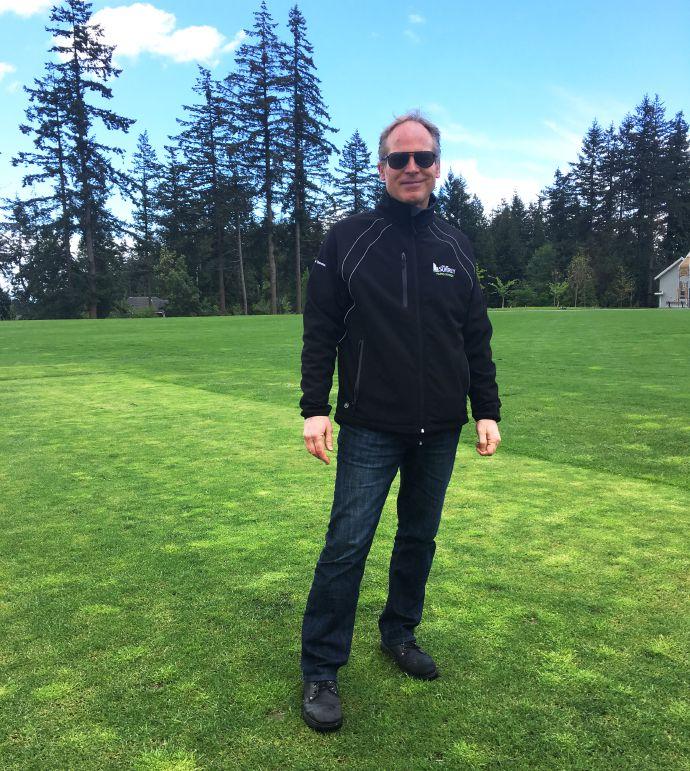
in 2016-17 with significantly more snow than normal, more days with temperatures below freezing and one of the wettest winters on record.
The unprecedented weather resulted in field shutdowns in December and January, inconveniencing several user groups who typically play soccer throughout the winter months when temperatures are usually comfortably above freezing.

“We get winter every year out here, but it typically lasts one week, two weeks or three weeks, and the groups use that as a hiatus during the season. When this turned into two months plus, that was very difficult for us.”
He described the season as “a normal Canadian winter” – it was anything but for Lower Mainlanders accustomed to milder conditions – which played havoc with the municipality’s winter schedule.


OPEN FOR BUSINESS


Introducing the new John Deere 1R Cab Tractor – until you don’t need the cab. That’s when the new 1R is truly open for business. Removable doors and nearly 90-degree extension of your front and rear windows let you work in total comfort to get after those lawn and landscaping jobs.
And just think, when green season starts to give way to autumn, you can close up shop in a nice, heated cab. Now that’s versatility you can depend on with the new 1R Cab from John Deere.
Canadian Commercial Distributors
British Columbia
Oakcreek Golf & Turf Inc.
Kelowna 250-860-5090
Surrey 604-882-8399
Duncan 250-701-0766
Alberta
Oakcreek Golf & Turf Inc.
Calgary 403-279-2907
Edmonton 780-469-2332
Saskatchewan
Oakcreek Golf & Turf Inc.
Saskatoon 306-975-1110
Manitoba Mazergroup
Winnipeg 204-253-2900
Ontario
Turf Care Products
Canada Limited
Carp 613-821-1880
Medina 519-349-2400
Newmarket 905-836-0988
Québec
Les Produits Turf Care
Canada Limitée
Vaudreuil-Dorion 450-218-4544
Atlantic Canada
Vesey’s Equipment
York, P.E.I. 902-892-8873
1-866-455-TURF (8873)
Norris is responsible for about 100 baseball diamonds, 70 natural turf fields and 14 synthetic turf fields. He said the extended weather-driven shutdown of his fields last winter was felt particularly with the closure of the artificial fields that normally can be used 365 days of the year.
“We had them shut down for a good part of December and January. That was a lot of lost revenue in addition to the user groups not having any soccer facilities to use.”
Unlike most other parts of Canada, where soccer is played outdoors during the summer months, the comparatively milder winters in British Columbia’s Lower Mainland allows for winter play, even though play on natural fields is limited to 12 to 15 hours per week on mainly weekends and during daylight hours.
Fields are dormant during this time period yet are still a vibrant green colour.
“They are playable, but they’re delicate.”
Norris admitted that allowing winter play on Surrey’s dormant natural fields presents a challenge because they don’t have the ability to rebound from wear and end up in “tough shape.”
This leads to an enforced shutdown of the fields for a minimum of 60 days spanning April to the first part of June. While they are closed for use, the fields are overseeded and irrigated and provided the time necessary to recover from winter play.
This year’s unusually harsh winter, however, led to some winter kill as well as fungal damage, including fusarium and snow mould. It prompted Norris to double his overseeding program in the spring to return the fields to a healthy state.
Baseball season in the Lower Mainland usually begins April 1, but was delayed this year to prolonged wet field conditions. Once it stopped snowing this winter, the area was hit with unusually heavy rain. Some older baseball fields with inferior drainage capabilities struggled in the early spring and, by the second week of May, there were still three or four diamonds still closed due to excessively wet soil conditions.
Norris said weather experts have warned that more variability in weather extremes can be expected in the years to come.
“If that’s the case, we should be prepared
for winters like this in the future. That climate variability is definitely going to be a challenge for us in terms of how we manage our assets and how we want to build our new assets to be more weather resistant. This variability is going to become more of a norm.”
In preparation, Norris said improvements are in store for Surrey’s clay-based fields that had struggled so much during the winter.
“That wasn’t so much because of the winter. It was also because of the amount of precipitation we had over the winter, which was almost a record amount as well.”
Surrey has had a municipally imposed cosmetic pesticide ban in place for close to a decade that presents another challenge to Norris and his staff.
“We’ve had to improve on our cultural practices in terms of overseeding and fertilization and careful watering. As long as we can maintain good density on our sports fields, we don’t see a lot of invasive species.”
Snow mould and other diseases, he said, aren’t as easy to overcome through cultural practices. Under the terms of the municipal pesticide bylaw, pesticides can still be used in extraordinary situations. Norris said if an extreme condition might lead to total degradation of a field, the necessary pest control product can legally be used on a limited basis.
Only a few of Surrey’s fields are lit.
He said his department hasn’t been subjected to shrinking budgets in recent years, and requests have been made for one-time funding if it is deemed certain assets require additional assistance. Funding is always an issue when governments are involved, he said, noting as a manager he is to look at his priorities annually and shift them around to where they are most needed.
“No doubt we rob Peter to pay Paul in our line of work, and we try to keep our residents as satisfied as possible to the best of our ability.”
Norris’ job description is “a triangle of responsibility,” he said, adding it consists of three parts: looking after the city’s sports fields, looking after the sports fields’ bookings and allocations, and looking after all park structures.









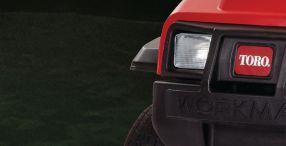
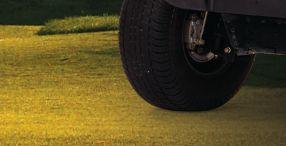
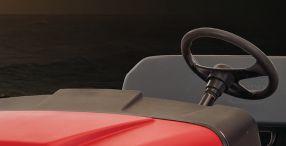
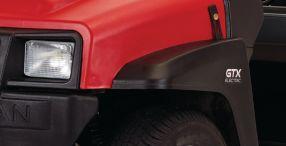
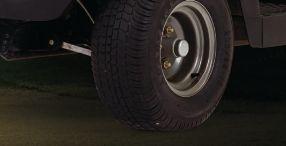




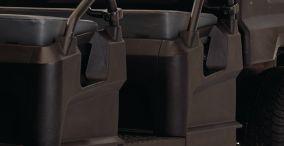





Turf variety selection is first consideration
Growing a healthy lawn means selecting the correct type of grass and using good cultural practices
By Dr. Michael Brownbridge
Vineland Research and Innovation Centre in Vineland, Ont. is investigating improved turf grass cultivars in combination with new pest management tools to provide lawn care practitioners with the tools to grow healthy turf in residential areas.
Growing a healthy lawn means selecting the correct type of grass and using good cultural practices, including cutting, feeding, aerating, seeding and watering. This turf will be less susceptible to pests and diseases and more resilient in the face of weather events such as drought and extreme heat and cold.
“New grass varieties are coming onto the market that are better adapted to our changing environment,” said Dr. Michael Brownbridge, Vineland’s research director, horticultural production systems. “New perennial ryegrass and tall fescue cultivars exhibit different
growth habits from traditional fescues and ryegrasses, and are similar to the popular Kentucky bluegrass, offering a more aesthetically-pleasing appearance. Newer varieties also have superior root systems, allowing them to access water and nutrients more efficiently from the soil.”
In addition, some new cultivars harbour naturally occurring endophytic fungi that produce alkaloids conferring higher levels of resistance against pests, including two of the most prevalent: hairy chinch bug and European chafer (commonly known as white grubs).
“Several of these new grass varieties have performed well in research trials evaluating resistance to pests,” Brownbridge said. “The high alkaloid ryegrass, Natural Knit perennial ryegrass, Natural Knit tall fescue and insect-resistant mixes incorporating high alkaloid ryegrass, were found to be the most resistant against chinch bugs while
European chafer grubs avoided feeding on the insect-resistant mixes.”
Using the correct grass variety is only the first step in maintaining a healthy lawn. Since pesticide bans took effect in many residential areas across the country, biocontrol agents are more frequently used. For instance, nematodes are the standard for grub control in turf. The Vineland team found that when applied in late August/early September, two nematodes, Heterorhabditis bacteriophora and Steinernema glaseri , consistently provided about 50 per cent control of European chafer. Later applications or those made in the spring were relatively ineffective. A new nematode, Steinernema scarabaei, is even more effective. Although challenging to produce, it is a robust nematode that survives in the soil for several months and can potentially provide extended control of white grubs.
The nematode Steinernema carpocapsae , rosemary oil and a sprayable
formulation of the fungus Metarhizium anisopliae are also effective against chinch bugs when used in July.
Lawns and gardens can be healthy without the use of pesticides. It is important to use a combination of approaches – the right type of grass and proper lawn care practices with the use of effective biocontrol agents, as needed – to achieve best results.
This research was supported by the Ontario Turfgrass Research Foundation, the Quebec-Ontario Cooperation for Agri-Food Research, Agricultural Adaptation Council, the Cosmetic Use Pesticides Research and Innovation (CUPRI) program, Landscape Ontario and the Canadian Ornamental Horticulture Research and Innovation Cluster (COHA).
Dr. Michael Brownbridge can be contacted at 905-562-0320 x798 or by email at michael. brownbridge@vinelandresearch.com.

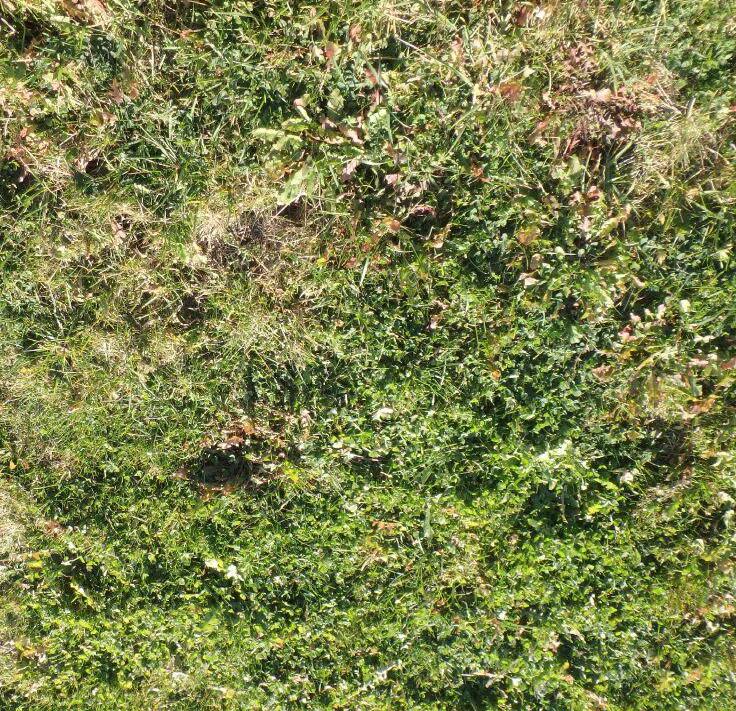
Back to Back in the Battle Against

Tips to keep up with engine care
Being proactive and staying on top of new technology reduces downtime, increases productivity.
By Tom Billigen
Many of us remember the days before ethanol fuels, when oil options were limited and air filters needed to be changed frequently. Those days are fading as engines continue to advance and manufacturers develop features that reduce maintenance and downtime. While these trends make maintenance easier, they also make it as important as ever to know your engines’ specifics. Ultimately, being proactive about maintenance and staying on top of new technology will lead to reduced downtime and go a long way toward being more productive.
Tip #1 Fueling productivity
Getting the most out of an engine still starts with the fuel you put in the tank. The days of choosing between regular, unleaded and diesel, however, are long gone. The development of ethanol fuels created the need to be more mindful about fuel choices. Today’s commercial engines can tolerate ethanol fuel blends up to 10 per cent, however using ethanol can lead to fuel system problems – in large part because ethanol attracts water, which can lead to corrosion within the carburetor. While lower levels of ethanol – 10 per cent or less – are generally safe to use, it’s best to avoid ethanol whenever possible. Among the ethanol-free options, any gasoline with an octane rating of 87 or higher will typically

be a safe bet, especially if storage in higher ambient or high humidity is unavoidable.
From the moment fuel is added to the engine’s tank, it begins to lose volatility, eventually becoming stale through oxidation and chemical breakdown. This is typically only a problem if the engine sat idle for a month or more without being started or having fresh gasoline added. Filling with fresh gasoline appropriate for the season will help to delay the effects of stale fuel by preventing diminished performance, vapour lock and other potential setbacks.
To get the most out of your fuel, consider using a fuel stabilizer to combat stale fuel in equipment that tends to sit for periods of time. Many of these products are also formulated to combat the corrosive effects of ethanol fuels, inhibit chemical reactions that lead to corrosion, and prevent gum and varnish buildup within the engine.
Tip #2 A well-oiled machine
Regularly scheduled oil changes shouldn’t be a new concept for anyone working with engines, and staying on top of oil changes is particularly important for small aircooled engines due to the high temperatures at which they operate. A general rule has been to change oil every 100 hours of operation for most equipment and every 50 hours for some small utility equipment. Oil that’s used beyond its suggested service life loses viscosity, its additive package and its ability to properly clean, cool and lubricate. This can put a damper on engine performance and cause lasting damage that will reduce the engine’s life.
Today, improvements to synthetic and conventional oils, as well as advanced oil management systems, are extending oil change intervals. While that’s good news, it also makes it more important than ever to know the guidelines for each engine in


SG
Introducing Foltec SG, a new, innovative foliar nutrient technology from The Andersons. Different by design, Foltec SG will change the way superintendents think about complex foliar nutrition programs.





Designed to optimize turf nutrition, Nutri DG is a combination premium turf nutrients and The Andersons patented Dispersing Granule Technology. Experience enhanced nutrient distribution and improved playing conditions when you apply Nutri DG.
A unique bio-amendment that combines natural dihydrate gypsum and humate in a homogenous granule. Black Gypsum improves soil conditions and reduces the affects of harmful salts and excess sodium.
Dispersing humic acid granules improve fertilizer efficiency, improve soil structure and enhance nutrient uptake. Humic DG’s increased surface area provides greater efficiency at lower application rates than conventional screened humate. For more information visit AndersonsPro.com
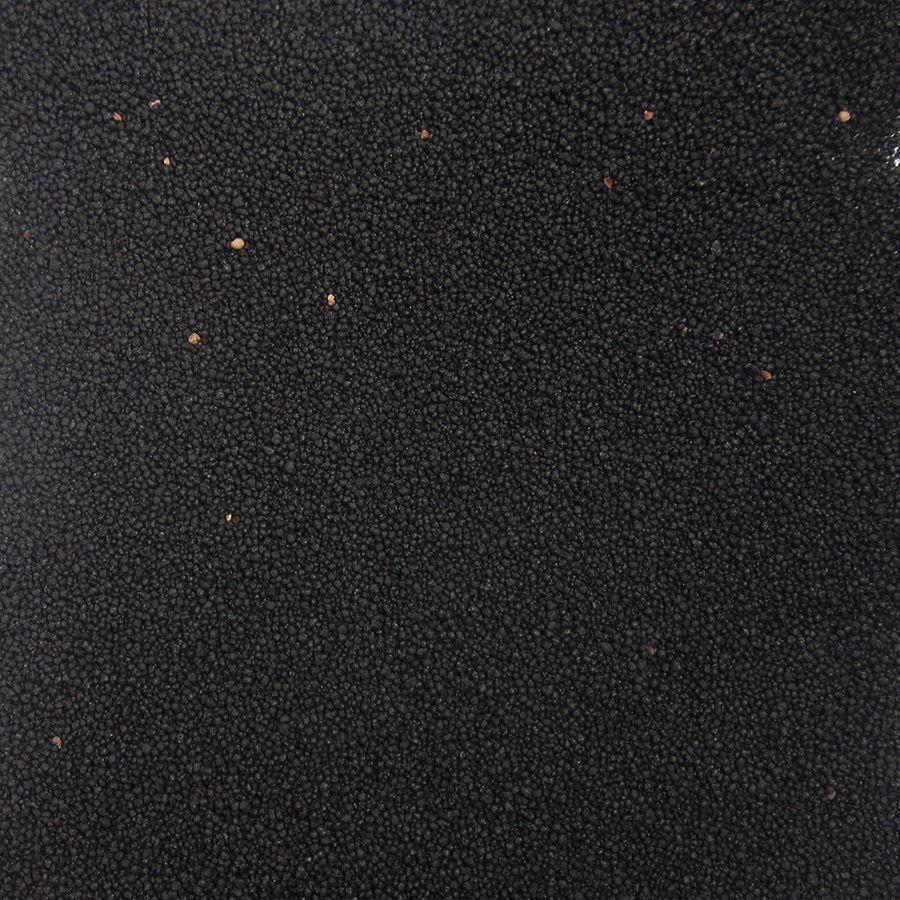

Visit one of these participating Exmark Dealers to learn more about the full line of professional Exmark models.
ALBERTA
CALGARY ALBERTA FOREST & GARDEN
403-248-0878
CLARESHOLM CHALLENGER NEW HOLLAND LTD . . . . 403-625-3321
EDMONTON ALBERTA SMALL ENGINES . . . . . . . . 780-944-9559
EDMONTON EDGE EQUIPMENT LTD . . .
RED DEER FUTURE AG INC
. 780-455-3343
403-343-6101
SHERWOOD PARK ALL SEASON EQUIPMENT LTD 780-464-7788
STONY PLAIN PARKLAND FARM EQUIP (1990) LTD . . 780-963-7411
BRITISH COLUMBIA
BURNABY FORESHORE EQUIPMENT & SUPPLY . . 604-436-9312
CHILLIWACK CHILLIWACK OUTDOOR POWER EQUIP . 604-792-4410
COURTENAY PILON TOOL RENTALS 1972 250-338-5361
KAMLOOPS B & L SMALL MOTORS LTD . . . . . . . 250-376-0033
KELOWNA SAVOY EQUIPMENT .
250-868-1010
LANGLEY PRAIRIE COAST EQUIPMENT INC . . . . 604-530-4644
N VANCOUVER ARROW EQUIPMENT LTD 604-987-9926
SUMMERLAND SUMMERLAND RENTAL CENTRE 250-494-6916
SURREY FRASER VALLEY EQUIPMENT LTD . . . . 604-590-1433
VANCOUVER WEST COAST GARDENERS . . . . . . . . 604-430-4117
MANITOBA
HEADINGLY HEPBURN ENTERPRISES INC 204-889-3392
ST ANDREWS ST ANDREWS PARTS & POWER 204-953-0030
WINNIPEG ABC POWER TOOLS & GARDEN SUPPLY . 204-222-3139
NEW BRUNSWICK
DIEPPE ADVANCE MOTORSPORTS LTD . . . . . 506-384-1030
ONTARIO
ALFRED CARRIERE & POIRIER EQUIPMENT 613-679-1103
AYR AYR TURF & TRAC LTD 519-632-9901
BRANTFORD BOBCAT OF BRANTFORD INC . . . . 519-752-7900
BRODHAGEN B & K TIRE AND BATTERY . . . . . . 519-345-2248
BURLINGTON BR DICKSON EQUIPMENT INC . . . . . 905-331-5040
CHATHAM CARRIER TRUCK CENTERS INC 519-352-7240
CREEMORE MAPLE VALLEY SALES &SERVICE INC . 705-466-3138
DRESDEN DNR OUTDOOR POWER EQUIPMENT . 519-683-6963
ELMIRA MARTIN’S SMALL ENGINES LTD . . . . 519-669-2884
HAMILTON BOBCAT OF HAMILTON LTD . . . . . . . 905-643-3177
LIMOGES M R BLAIS SALES & SERVICE INC 613-443-1230
MARKHAM YORK REGION EQUIPMENT CENTRE . 905-604-1797
MILLBANK ZEHR’S SALES & MANUFACTURING . 519-595-7579
MISSISSAUGA W .E . ENTERPRISES LTD . . . . . . . . . 905-629-1424
MISSISSAUGA WINDMILL POWER EQUIPMENT LTD 905-569-2055
NIAGARA THE LAKE J A G S REPAIRZ INC 905-688-7000
NORTH YORK PRICELESS PRODUCTS LANDSCAPE . . 416-410-2158
PETERBOROUGH M .C POWER SPORT . . .
705-748-5189
SARNIA CARRIER TRUCK CENTERS INC . . . . . 519-336-4840
THAMESFORD HURON TRACTOR LTD 519-285-3845
WATERLOO A TO Z RENTAL CENTRE . . . . . . . . 519-885-5590
WINDSOR CARRIER TRUCK CENTERS INC . . . . . 519-737-7520
WOODSTOCK THE POWER GARAGE . . . . . . . . . 519-533-1300
QUÉBEC
GATINEAU SERVICE DE REPARATION AYLMER 819-684-8446
LAVAL D-MINI MOTEURS INC 450-687-9171
LEVIS EQUIP-MOTORISES ST . NICOLAS INC . 418-836-1434
LONGUEUIL FAUTEUX MINI MOTEUR 2010 INC . 450-646-6976
MONT ST-HILAIRE G .H .L . DISTRIBUTION INC . . . . . . . 450-467-5459
REPENTIGNY LOCATION LE GARDEUR INC 450-581-6345
ST-HYACINTHE LAGANIERE MINI MOTEUR 2008 . . . 450-253-9035
SASKATCHEWAN
LLOYDMINSTER WICKHAM NURSERYLAND . . . . 306-825-3262
your fleet to make sure you’re not wasting money by changing oil too soon and also not running the risk of causing damage by waiting too long.
Always check the owner’s manual and engine warranty guidelines for the recommended oil type. Most small engines use SAE 30, as long as the engine is used in areas where the temperature remains at least 40 degrees Fahrenheit. It’s a good idea to consider full synthetic oil options, which are typically formulated to withstand prolonged use in high heat environments, compared to semi-synthetic and mineral-based oil. In some synthetics, a zinc additive provides anti-wear protection from metal components while a high-quality detergent in the blend ensures lower engine deposits over time.
To further extend oil change intervals, Briggs & Stratton recently developed Oil Guard, which extends intervals to as much as 500 hours by continually exchanging the oil in the engine with oil in an external reservoir. This reduces thermal breakdown of the oil by cycling it out of the engine and allowing the oil to cool in the reservoir before going back into the engine. This also works to reduce the temperature of the engine, and anything that keeps engine temperatures in check is positive for overall performance.
Tip #3 Beat the heat
For air-cooled small engines, fresh air is one of most important ingredients for sustaining performance, making regularly scheduled air filter changes key. Depending on the application and type of filter, air filters generally need changing every 100 to 250 hours.
While the negative effects of a dirty or clogged air filter are well known, improvements in filter medium as well as the development of cyclonic air filtration have changed the game for air filtration. Choosing OEM filters guarantees the right fit as well as a design optimized for the particular engine’s performance. Plus, those filters can last as much as three times longer than bargain filters. Not only will this reduce how often the air filters need to be changed, it also will result in better running, more productive equipment over the life of the filter.
Reviewing the air filter guidelines for any new engines in your fleet can also save from unnecessary filter changes. Many of today’s commercial engines feature high-performance air handling systems that manage debris well, preventing the majority of it from ever reaching the air filter. This is especially beneficial for high-debris applications such as turf. These new systems, paired with a superior air filter, can greatly reduce filter changes compared to engines from only a few years ago.
Tip #4 Always stay a step ahead
As technology improves and engine maintenance simplifies, choosing the proper fuel and staying on top of oil and air filter changes remain pivotal for productivity. Remember that keeping up with the trends and knowing the specifics for each of your engines is important for making your dollar, and productivity, go further.
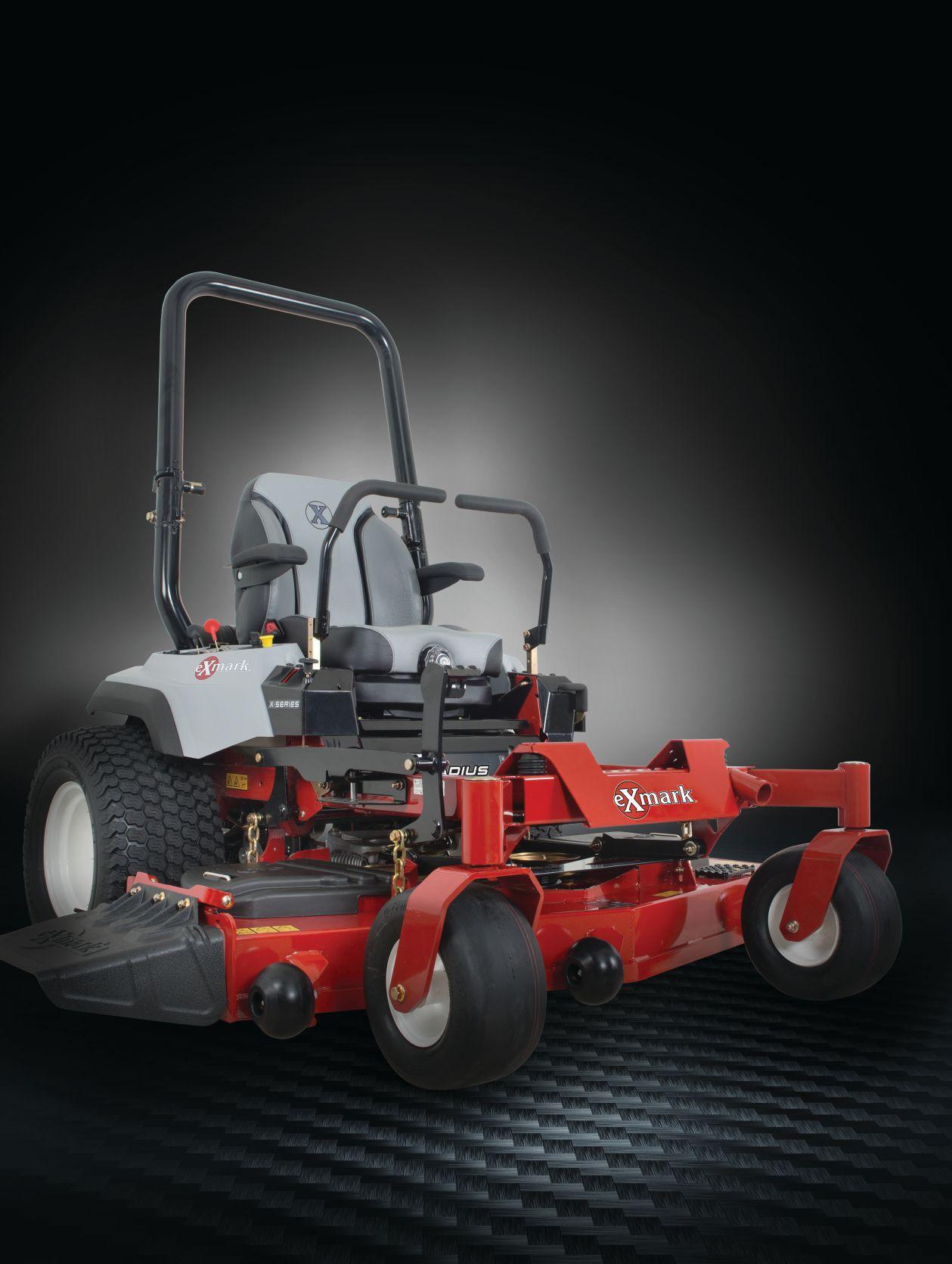

ALL OF WHAT WE’RE KNOWN FOR IN A REDESIGNED, VALUE-ORIENTED PACKAGE. The all-new Radius® delivers the commercial durability and comfort, simple operation, low-maintenance reliability, and flat-out performance that our pro and residential customers expect from an Exmark® zero-turn rider. Ready to experience our signature cut quality, reduced-maintenance and increased productivity in a stylish, value-oriented package, all at a lower total cost of ownership than competitive machines? If so, the next step’s an easy one. Step onto a Radius.
Avoid blind hiring when adding staff

Great interviewers can overlook crucial details and are better positioned if hiring by committee
Here you are again. Your organization just hired another employee who didn’t perform as expected, in spite of giving a great interview. Too often, candidates who present sparkling resumes and great initial impressions disappoint when they show up for work. Over time, these underperforming employees diminish morale, reduce efficiency, and cripple companies. If this scenario describes your business’ hiring record, you’re not alone.
According to hiring consultant Scott Wintrip, a phenomenon called hiring blindness is to blame – and its effects can be devastating to a company and its team members.
Fortunately, Wintrip has a solution. Rather than counting on one person to interview prospective employees, use a hiring team.
“Hiring blindness consistently results in ill-suited employment pairings,” says Wintrip, author of High Velocity Hiring: How to Hire Top Talent in an Instant (McGraw-Hill
Education; April 2017; ISBN: 978-12598594-7-2; $30). “That’s because great interviewers routinely overlook crucial details, even when they’re supported by a rigorous candidate selection process. A hiring team works together to ensure that they get an accurate impression of each candidate every time.”
Wintrip further explains that hiring blindness occurs when an individual fails to recognize an unexpected stimulus that’s right in front of their eyes. Hiring blindness is often to blame when candidates who interviewed well perform poorly or aren’t as qualified as they appear. Natural gaps and limits in perception keep hiring managers from accurately assessing a job candidate’s abilities. The key to curing hiring blindness is to build a team of hiring managers with complementary hiring styles and formatting all interviews as a team effort.
“This team approach reduces effort and increases hiring speed,” Wintrip adds. “Instead of separate interviews that consume most of the day, a brief screening interview by phone is followed by one hands-on
interview with the hiring team. With all four hiring styles in the room, interviewers rarely miss anything that’s important or unexpected.”
Keep reading for insights into the four hiring styles and how they can work together to hire the best candidate every time.
Determine your hiring style.
Your personality, expertise, and experiences shape your approach to leadership and how you select talent, Wintrip explains.
The four hiring styles are listed below. While none of these styles is “bad,” if an interviewer becomes too reliant on his dominant hiring style, it can distort his overview of reality and the result is often a bad hire.
• Tacklers are fast and decisive. They want to be in control and reach goals quickly. During interviews, they get to the point quickly and appreciate people who do the same. Tacklers tend to hire candidates they think will condense timelines and hit targets fast.
• Tellers are talkers. They use their communication skills to motivate people. During interviews they talk a lot, often selling the candidate on the company and potential opportunities. Tellers tend to hire candidates they think will act upon what the teller has said.
• Tailors are collaborators. They point out that there’s no “I” in “team.” During interviews they build a rapport and allow conversation to become an open exchange of thoughts and feelings. Tailors tend to hire candidates they think are capable of cultivating strong workplace relationships.
• Testers are data-driven. They thrive on clarity. They make decisions based on tangible evidence. During interviews, they gather pertinent details and value facts over stories. Testers tend to hire candidates who offer quantitative evidence that they’re right for the job.
Recognize your blind spots.
Blind spots hamper effective interviewing, so be sure to listen to and communicate with your teammates for added insight into each job candidate. Tacklers see drive, tellers see buy-in to the company mission, Tailors see potential collaborators, and testers see details. All four styles tend to miss things the others see; therefore every bit of input matters greatly.
“To put it simply, people have a tendency to see what they’re looking for, especially when their minds are primed and ready to see specific things,” Wintrip says. “In hiring terms what this means is that you can be blinded by your own expectations.”
Assemble a well-rounded team of hiring managers. It’s important to stack your hiring team with people of all four styles. This will give you an expansive, 360-degree view of a candidate. A diverse, complementary team rarely misses important cues.
“A team composed of people with diverse hiring styles gives you a more expansive and realistic perspective than if your team were composed of people with just one or two styles,” says Wintrip. “To assemble a diverse team, identify three people with hiring styles different from your own. By drawing from a diverse set of strengths, you will be able to choose the best possible candidate for the job at hand.”
Before conducting an interview, co-ordinate your team’s best efforts.
To best leverage each hiring style, your team should have a discussion that answers the following questions:
• What are my style’s blind spots?
• What other styles can better see what I’m not seeing?
• What past hiring mistakes have we made repeatedly? How will the hiring team use its combined styles to avoid those mistakes
• What do we need to know about a candidate? What can we
do to uncover that information? Which styles are best suited for spotting those details?
“Failing to hire the right candidate quickly cripples companies,” Wintrip concludes. “As the speed of business continues to increase, it’s more important than ever to fill open positions with precision and accuracy. Companies must streamline their selection process for identifying top talent. A hiring team is the answer. Together, they can use their collective skills to quickly spot the best candidate and help their company thrive.”
Scott Wintrip has changed how thousands of companies across the globe find and select employees, helping design and implement a process to hire top talent in less than an hour. Over the past 18 years, he built the Wintrip Consulting Group (WintripConsultingGroup. com), a thriving global consultancy. Wintrip has been awarded a place on the “Staffing 100,” a list of the world’s 100 most influential staffing leaders. He’s also a member of the Million Dollar Consultant Hall of Fame and was recently inducted into the Staffing 100 Hall of Fame.

4G pitches take turf to new safety levels
Current technology blends synthetic and natural turf blades for a hardier hybrid playing surface
The fundamentals of football (soccer) have changed little since it was established in 1863. However, with soaring salaries and the introduction of new technology, pretty much everything else has – right down to the pitches they play on.
So how have football pitches changed over the years? U.K. garden and lawn dressing retailer Compost Direct has tracked the evolution of the football pitch from grass roots to 4G technology.
GRASS: THE BEGINNING
As you’d expect, football started out on grass, a pitch the sport would rely on right up to the present day. Pitches are heavily reliant on good levels of light and watering, requiring high levels of maintenance. Because of the delicacy of grass, intensive use can leave pitches far from perfect.
Professional football clubs hire groundsmen to ensure their pitch is match-ready. High-profile roles can earn up to £42,000, so it’s clearly big business.
THE RISE OF ARTIFICIAL TURF
While artificial turf is commonplace now, it was unheard of before 1960. It was invented by David Chaney, head of the RTP research team, and was made from polypropylene or nylon fibre attached to a concrete or asphalt base.
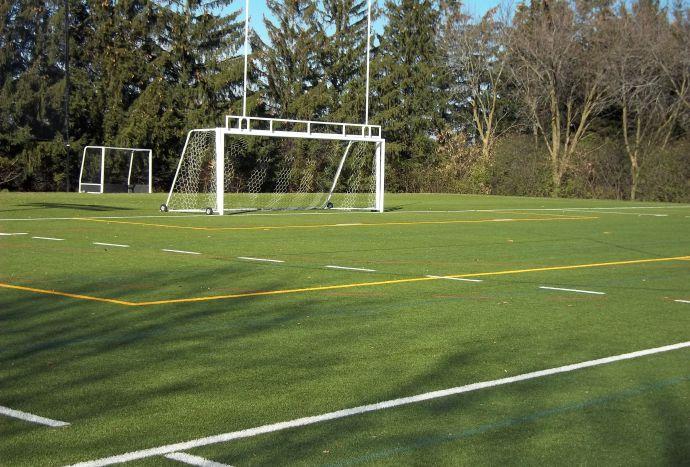
This type of turf was first installed and used in 1966 at Houston’s Astrodome. U.K. teams soon became aware of the benefits this low-maintenance turf would bring, with Queens Park Rangers, Luton Town, Oldham Athletic and Preston North End all replacing their natural grass pitches.
However, as it was first-generation, this type of pitch had many negatives. The harshness of the pitch was detrimental to players’ joints, while sliding tackles often led to friction burn. In terms of matches and player performance, footballs were difficult to control and fatigue levels were higher. Surprisingly, these pitches were played on until 1995, when they were officially banned from English professional football. Once again, Premier League pitches were replaced with natural turf.
THE 3G REVOLUTION
After the failings of the first generation of
artificial turf, the 3G pitch emerged victorious in the early 2000s. Learning from the mistakes of previous pitches, the turf was created to mirror real grass, with longer, thinly spaced tufts to ease the impact on players. Likewise, sand infills and rubber granules deliver both bounce and support.
3G pitches are common in the U.K., with 780 registered in total for the 2016/17 season, according to data from the FA. They are primarily used by lower league sides and as training pitches due to their all-year-round appeal.
MOVING FORWARD WITH 4G
4G pitches take the next step forwards from 3G pitches. They contain a mixture of artificial and natural turf and are created by growing natural grass around artificial blades. They work by combining the benefits of both natural and artificial pitches.
The pitches are hardwearing and low-maintenance, as well as being soft underfoot and having minimal impact on how the player interacts with the ball.
Although not officially recognized as of yet by the Football Association, 4G pitches are growing in popularity and are set to be the next stage in artificial turf.
The 4G pitches such as the Desso Grassmaster contain a mixture of artificial and natural turf, injecting the artificial blades first and then growing the natural grass around them so that they bind to the roots. The system was used at the 2010 FIFA World Cup – the first time in history that a World Cup was played on pitches partly made up of artificial grass.
The success of the new technology prompted top premier league clubs such as Manchester City, Arsenal and Totten-
ham to adopt this turf in their stadiums. It seems that the future of football turf is to find the perfect blend of both natural and artificial.
For the 2014 FIFA World Cup, Brazil invested in the Desso Grassmaster hybrid pitch for the Arena de Sao Paulo.
Benefits of artificial grass:
• Hardwearing
• Easy to maintain
• Does not need sunlight to thrive, which is ideal for steep-sided stadia
• Resistant to inclement weather, including wet, sunny and colder climates
Benefits of natural grass:
• Soft underfoot
• Does not change the way a player interacts with the ball
• Does not produce skin abrasions when tackling
pte7halfpg4.875triline_2017tnr 16-12-07 11:50 AM Page 1

The Progressive ADVANTAGE The Progressive ADVANTAGE

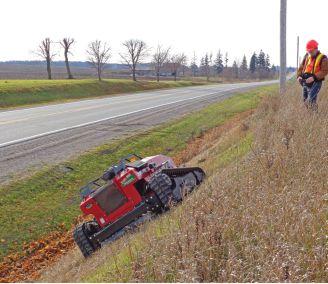


Power by propane is ozone friendlier
Emissions from gasolinepowered equipment negatively contribute to air quality index
By Jeremy Wishart
During the dog days of summer, the working environment for professional landscape contractors and their crews can be physically demanding and unhealthy. Unfortunately, small engines like those used to power commercial landscape equipment are one of the largest contributors to ground-level ozone, which directly impacts human health. In fact, a 2011 study conducted by the U.S. Environmental Protection Agency found that the emissions produced by gasoline-fueled off-road equipment, such as mowers, leaf blowers, trimmers, and brush cutters, amounted to approximately 26.7 million tons of pollutants, including chemicals that contribute to ground-level ozone.
Unlike the “good” ozone layer in the stratosphere that protects against the sun’s harmful rays, ground-level ozone forms when emissions from everyday items, including mowers, combine with other pollutants and “cook” in the heat and sunlight common during a hot summer day. This ground-level ozone is a harmful air pollutant that can cause breathing difficulties, eye irritation, and can worsen pre-existing conditions such as asthma or chronic respiratory infections.
In addition to hot, sunny days impacting employee health and productivity, there are also locations that adhere to strict emissions restrictions that take effect
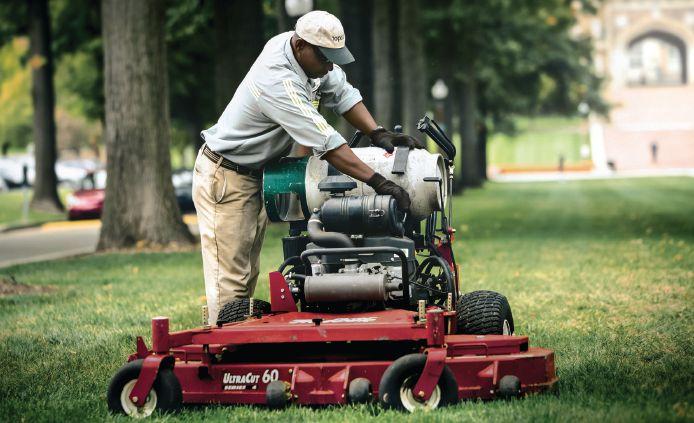
when the local “air quality health index” reaches a certain threshold. Sometimes these local emissions restrictions can dictate when contractors can and can’t operate their gas-powered mowers. This presents a problem for contractors with customers waiting for scheduled services, and can make it chaotic to catch up with maintenance throughout the rest of the week if air quality alerts last beyond a single day.
The good news is there are several steps that contractors can take to limit the emissions that play a large role in increasing the levels of ground-level ozone. Regardless of whether a contractor is working in a municipality or area with restrictions in place, contractors should talk with their crews about these daily practices that can limit emissions when the heat is on.
1. CHANGE YOUR MOWING SCHEDULE. Mowing for the largest customers early in the morning or in the evening can cut down on the amount of emissions converted to ozone. This technique leaves
time during the heat of the day to work on projects that don’t require mowers, such as landscaping.
2. MAINTAIN YOUR MOWER TO HELP IT RUN CLEANER. A clean-operating engine produces fewer emissions, so make sure crews are in the habit of checking air filters, oil filters, and other components according to the equipment’s maintenance schedule. Clean the underside of the mower of any clippings so it’s not overworking the engine, and keep mower blades sharp so cuts are more efficient.
3. USE HAND TOOLS OR BATTERY POWER WHEN APPLICABLE. Although battery power isn’t an effective solution for larger equipment, newer batteries are more than plenty to take care of trimming and edging lawns and flower beds, even for use with hedge trimmers, leaf blowers, pruning with pole saws, and residential chainsaw work. This equipment can be used without contributing to
local ground-level ozone like two- and four-cycle gas engine hand tools would, and may also be favoured in residential work because battery equipment operates more quietly. Some contractors have even found success by installing solar panels or propane powered portable generators on trailers to allow batteries for small tools to charge between uses.
4. DOUBLE-CHECK THE CAP. By making sure the fuel tank cap is screwed on tightly before starting the engine on a mower, operators can prevent an often overlooked opportunity for emissions to escape. Gasoline and diesel contain chemicals that can contribute to ground-level ozone even before the combustion process.
5. USE A FUNNEL TO REFUEL AND ELIMINATE SPILLS. Preventing spills in the field can help with costs by not wasting fuel. Spilled gasoline and diesel can evaporate into chemicals that contribute to ground-level ozone, as well as cause unsightly damage to grass and concrete in the form of burns and stains. Excess fuel may also be washed into storm drains by rain or sprinkler systems and end up in natural bodies of water that can infiltrate drinking water. Using a funnel can also prevent burns in the event that fuel spills onto a hot muffler or engine, adding another protection to operators in the field.
6. CONVERT YOUR FLEET TO PROPANE. The best way to avoid emissions restrictions and combat groundlevel ozone is to convert commercial mowers to propane. Compared with gasoline mowers, propane reduces greenhouse gas emissions by more than 15 per cent, and carbon monoxide emissions by more than 40 per cent. These mowers meet and exceed requirements in most communities for use during emissions restrictions.
Propane mowers allow contractors to simply remove several of these listed tips from crew protocol, too. For example, it would no longer be necessary continued on pg 38




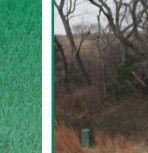
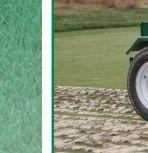
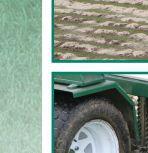

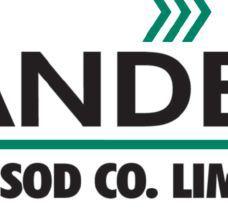
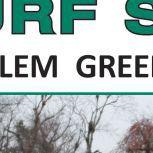

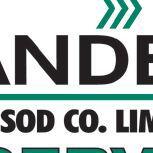


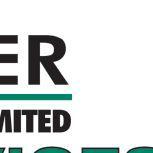






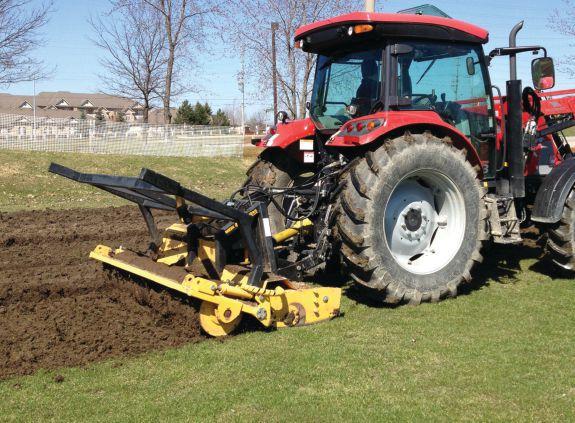
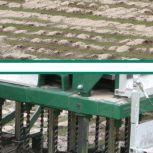
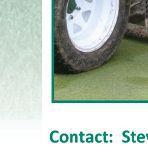


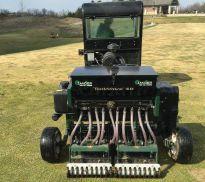
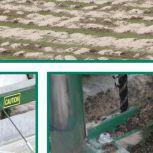


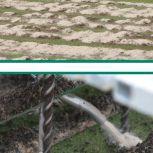

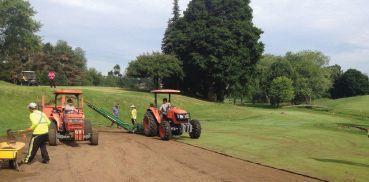

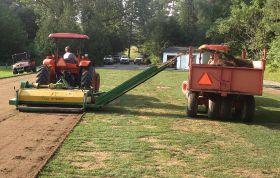
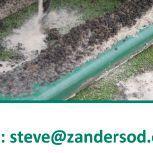

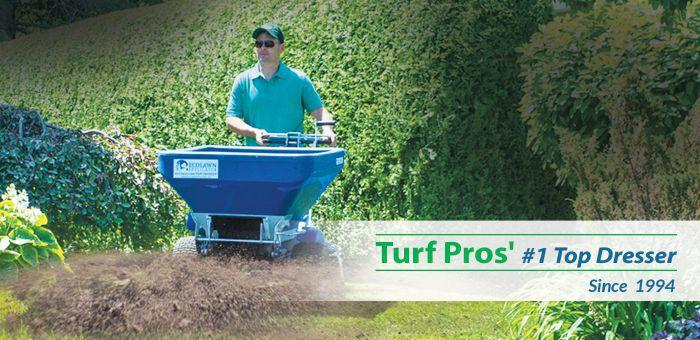
Julia Webber is president of Fish Farm Supply Co. www.fishfarmsupply.ca. julia@fishfarmsupply.ca.
Getting golf course ponds back in form
Preventive
maintenance is best, but ponds can still be cleaned up and back on track mid-season
By Julia Webber
After a spring of beautiful weather we have all been busy taking care of customers and keeping the business up and running. Sometimes that means we get so busy that we get behind on some jobs that we know would make life easier down the road but don’t ever seem urgent enough to make it to the top of the to do list. One of those things for many golf courses is preventative maintenance for your lakes and ponds. So, if you’re like so many others and have not had time to add pond dye or beneficial bacteria before the weeds and algae get out of hand, what can you do to manage the problem now and get the pond back to looking its best?
The first step would be to assess the problem. Problems can range from excessive plant growth, to cloudy water, to algae outbreaks. I would like to note here that some plant and algae growth in a pond is normal and very healthy, but like all things there is a tipping point. If, however, you do have lower amounts of plants and algae these will help to prevent drastic algae blooms in a pond that can lead to very low oxygen levels by using up nutrients.
Some emergent (above water) plants, such as cattails, are particularly useful in this aspect as they absorb huge amounts of nutrients and are very easy to control. String algae on waterfalls and rocks is also a useful means to use up nutrients, and it
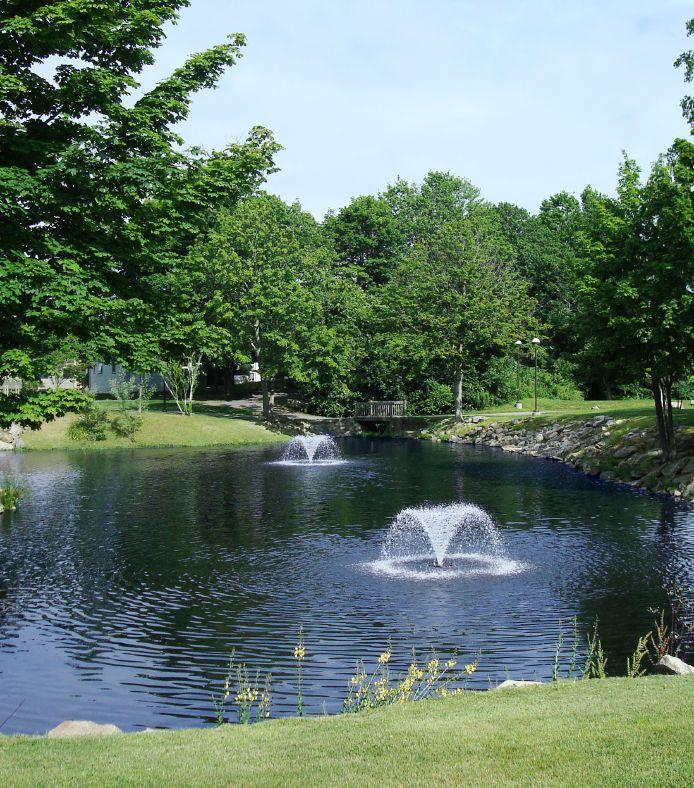
grows at a relatively controlled rate. String algae also works as a natural filter to help clarify water and stabilize the bottom.
When you cross the tipping point into excessive plant growth, the main source of the problem is excessive sludge and compost on the bottom of the pond. This essentially works as fertilizer to create growth. The fastest way to take care of excessive growth in the heat of the season is to
manually remove the weeds with either a cutter or rake. Cutters have an advantage of removing large amounts of weeds quickly with lower physical exertion than raking them. A cutter essentially cuts the plant off at the bottom of the pond and resets the growth. Once detached, the growth will float and can be easily gathered at the shoreline and removed.
If you are going to cut weeds it is
essential to remove the growth from the pond so that it does not sink to the bottom and fuel more growth or an algae bloom. Once you have removed the growth, you have the chance to start preventative maintenance with pond dye and beneficial bacteria to help prevent it from re-occurring.
CLOUDY AND MUDDY WATER
If the problem is cloudy or muddy looking water, this can be caused by a variety of reasons. Cloudy water is usually sus pended clay/soil particles or suspended algae. In our minds these seem simple to tell apart, but in reality algae is not only green but can also appear brown, yellow, light green or even red, so just because it is not green doesn’t mean that it’s not algae. The simplest place to start is by doing a settling test. Take a small sample of water in a jar or bucket and let it sit undisturbed for 24 hours. If the water clears over this time, the problem is being caused by suspended particles. If they settle out readily in the bucket test, the question you need to ask is why are they staying suspended in the pond.
Suspended particles can be caused by a large rain event that stirs the pond, a flooding event where dirt is washed into the pond from its surroundings, bot tom-feeding fish digging and stirring up mud and many other sources. For large rain events and other occasional sources of problems, the pond will likely clear af ter a few days and no action is required. If the problem is more sustained, then it might be worthwhile to find the source of the problem to solve it.
If the water from the bucket test does not clear up, the problem is generally be ing caused by suspended (planktonic) algae. This type of algae exists either as single cells or small colonies that are suspended in the water near the surface to allow them access to large amounts of light. Suspended algae can be addressed through the use of beneficial bacteria to reduce nutrient loads in the water, which these algae require to thrive.
Alternatively, pond specific algaecides (not chlorine based) can be applied for
faster results but should be followed up with a beneficial bacteria to prevent the problem from re-occurring and break the cycle of algae die-off and nutrients being released from the dead algae, causing a new crop of algae growth.
We have touched on suspended algae blooms, but what if you have clumps of string algae floating on the surface or covering rocks and the bottom of a pond? These algae operate very similarly to planktonic algae in that they require lots
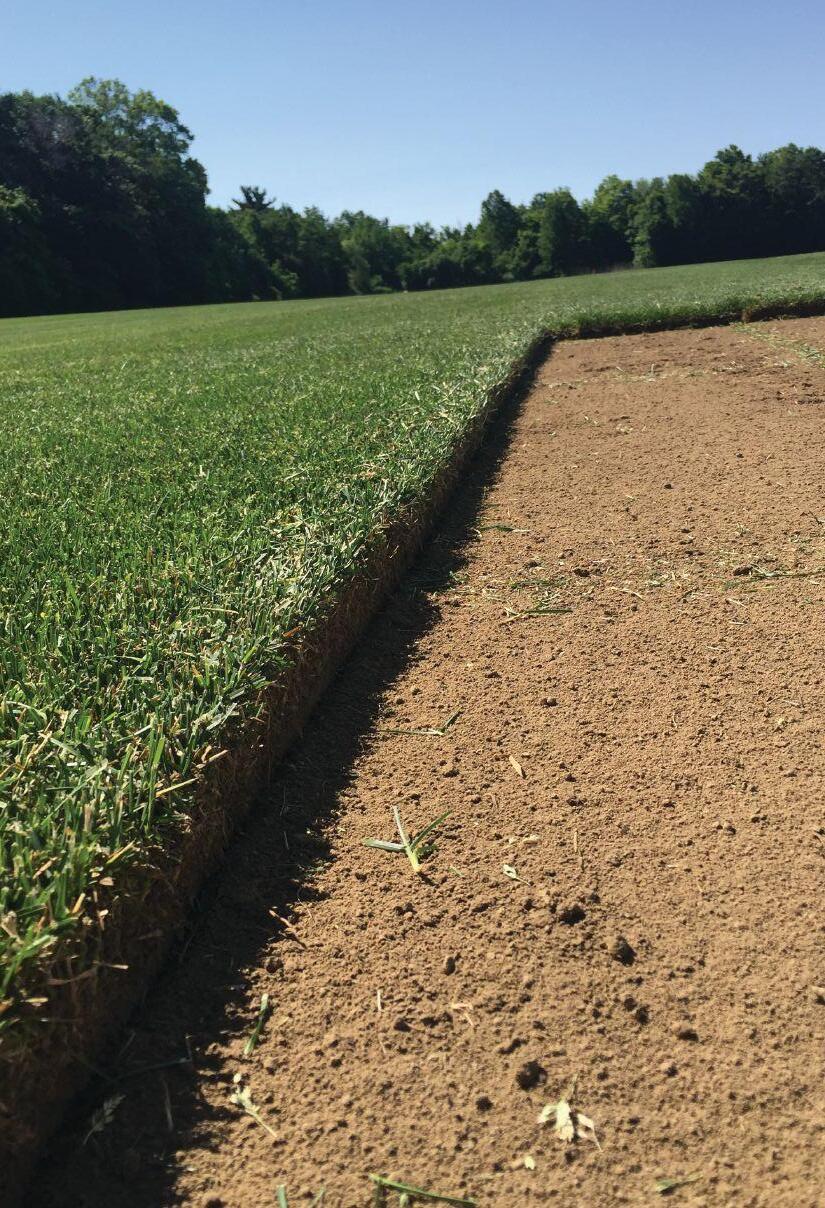

The only Tall Fescue with true rhizomes, RTF quickly fills in damaged and bare spots in your turf with new shoots of grass. This results in less overseeding, fewer weed problems and no wideleafed ugly clumps of grass like other tall fescues can form. RTF’s extensive root system has the ability to draw moisture from a deep soil profile, which helps it use less water and makes it adaptable in a wide range of soils. It has excellent heat and drought tolerance, with less irrigation.
• Self-repairing to fill bare spots
• Strong deep root system
• Saves 30% water
• Great for sun and shade areas

AVAILABLE AS SOD OR SEED:
Willowlee Sod Farms
Young Sod Farms islandgrownsod.com middlesexsodsupply.com visserssodfarm.com willowleesod.com youngsodfarms.com
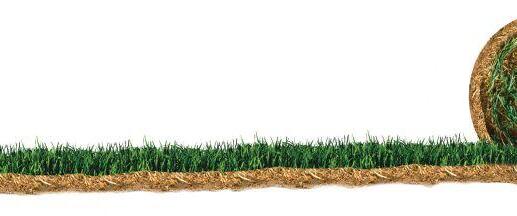
CONTACT YOUR LOCAL LICENSED RTF SOD GROWER: Quality Seeds Viterra
Terralink Horticulture qualityseeds.ca viterra.com tlhort.com

Some plant and algae growth in a pond is normal and very healthy, but like all things there is a tipping point
of light and nutrients to do well. The easiest way to control excessive growth would be to add an algaecide to kill off the algae, and then use beneficial bacteria and pond dye to help reduce the regrowth.
Most string algae initially grows on the bottom and sides of the pond, only when these mats grow large enough do parts of it break off and float to the surface. So if you are having problems with floating mats, the best way to manage them is by addressing the algae growing at the bottom.
Although preventative maintenance can save you time later in the season if the spring workload gets ahead of you, know that there are ways to clean up ponds mid-season and get back on track to healthy and maintained ponds.
TPI appoints new executive personnel
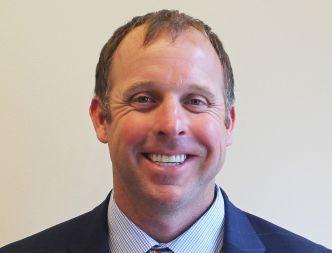

Turfgrass Producers International has appointed a new executive director and associate executive director. Casey Reynolds, PhD, and Karen Cooper have respectively assumed their new positions with the organization.
Reynolds was formerly assistant professor and turfgrass extension specialist at Texas A&M where he co-ordinated statewide research projects and extension programs. Previously, he was a turfgrass research and extension associate at North Carolina State University for 10 years. He is an advocate of the benefits of turfgrass and its usefulness in urban environments.
Cooper has extensive professional writing expertise, along with 15 years of administrative and project management experience. She was formerly senior manager of conference education for the Golf Course Superintendents Association of America (GCSAA), having managed all aspects of the annual GCSAA educational conference for more than 7,000 participants.
For more information about Turfgrass Producers International, visit www.turfgrasssod.org.


Building Something Better.
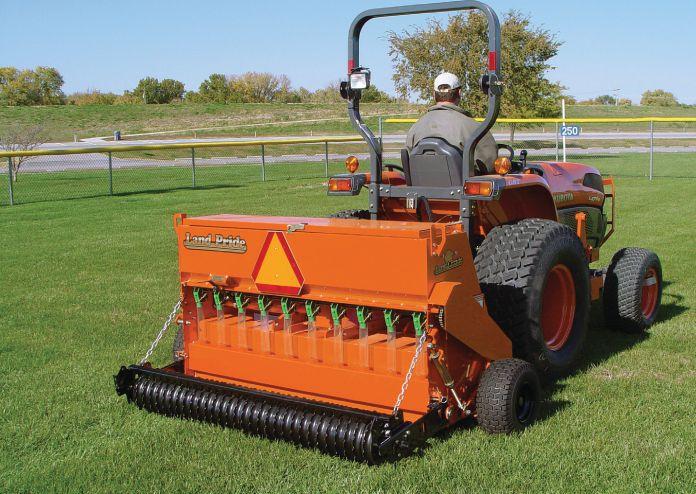
For over 30 years, Land Pride has been building top-quality implements for professionals and DIYers alike. Our products are built to last, built to perform, built to bring you back when you need to upgrade or expand!
Our line of Seeders cover widths from 48" to 11' and are rated for tractors 25 to 110 HP or more. Whether employed to restore a pasture, plant a food plot, or overseed a ball field or if you are a hometown landscaper doing lawns and community parks, we build a seeder that is just right for you.
Visit landpride.com today to find the product Performance Matched to your tractor or to locate your local authorized dealer.

www.landpride.com






































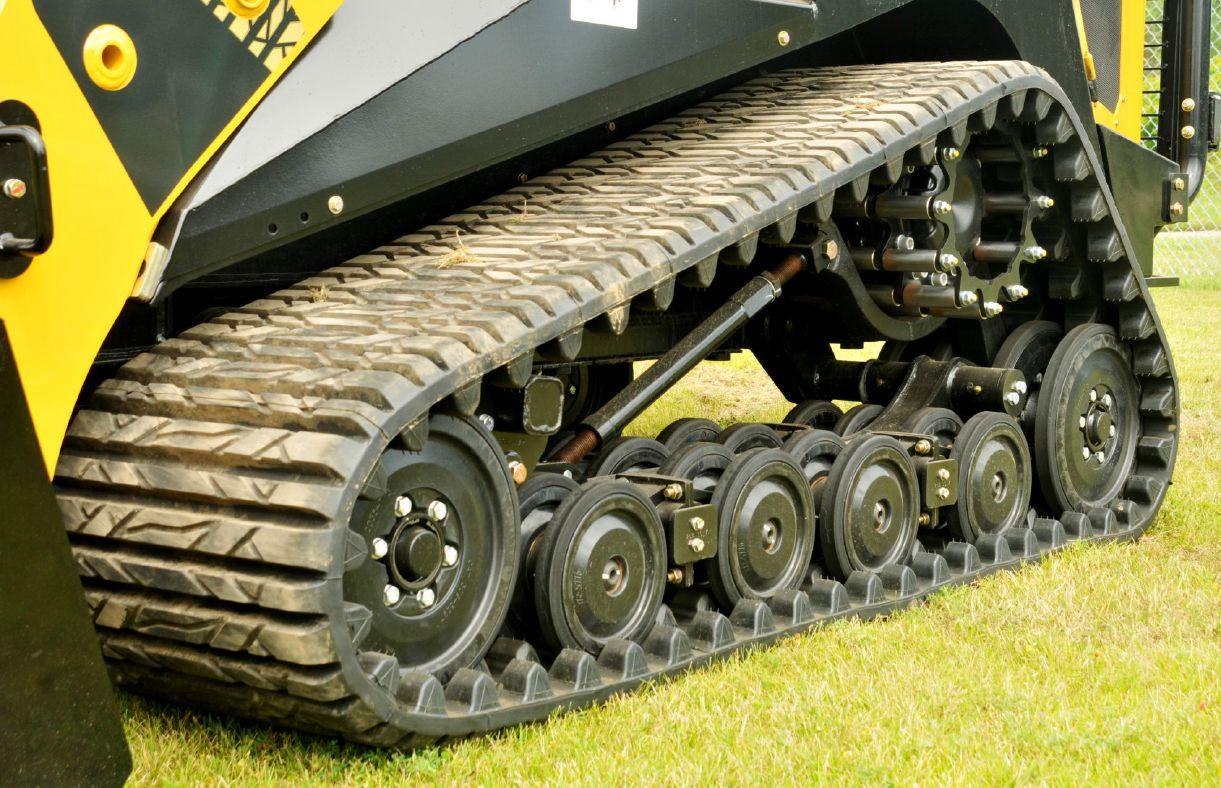
Keep rubber tracks regularly maintained
Tips for preventing common rubber track problems and prolonging wear life. By Buck Storlie
Great equipment design is the first step toward more uptime and ROI, but ultimately a machine is only as good as it’s treated. Contractors want the greatest bang for their buck, so it’s in their best interest to train equipment operators on operation and cleanliness to optimize equipment longevity. It’s also a good idea to closely monitor equipment to prevent potential problems.
Compact track loaders are one of a jobsite’s most versatile pieces of equipment, so when it comes to the machines’ rubber track undercarriages, these tips couldn’t be more applicable. Simply taking the time to implement these steps can help contractors get a lot more mileage from their machines. That saves money in service and replacement costs and reduces downtime.
HOW IS THE EQUIPMENT BEING USED?
Improper or aggressive operation is a major
contributor to excessive wear. In addition, certain applications result in much higher wear than others. To minimize damage, train operators on proper operation before they use the equipment.
Counter-rotations, or sharp changes of direction, are a big cause of premature undercarriage wear. This is especially true when driving over highly abrasive material, such as shale, granite or ragged materials commonly found on demolition sites. Not only do counter-rotations often lead to cuts in the track, they also result in material buildup on the tracks’ outer edge that gets into the undercarriage. Track systems with rubber wheel designs have the advantage of being open, compared to closed steel designs, allowing material to spill out. But it’s still possible for the abrasive material to get stuck among the roller wheels, lugs and track. Although the mostly rubber components are more forgiving to each other than steel-on-rubber designs, materials can cause chips and cuts. To reduce
the risk, encourage operators to use threepoint turns.
Operators should also avoid spinning the tracks, especially on abrasive surfaces. Like counter-rotations, spinning can result in cuts in the rubber and unnecessary undercarriage wear.
It isn’t always possible to choose the types of jobs and conditions machines will be used in, but it is important to be aware of the toll different applications can have on track life. Jobs involving a lot of abrasive material, such as demolition, scrap and quarry applications, usually cause extra wear. The potential damage is much greater so it’s especially important to avoid counter-rotating and spinning in these applications. On the other hand, tasks such as landscaping or golf course work that involve sand, soft dirt or turf, result in minimal wear.
MORE CLEAN, LESS WEAR
Aside from using proper operating
techniques, drivers should regularly clean a compact track loader’s undercarriage since its cleanliness directly impacts the wear rate.
The cleaning frequency depends on the applications and materials operators use the machines in, but daily cleaning is usually sufficient. Remove cohesive and abrasive material, such as mud, clay and gravel, as often as possible, even several times a day. This limits wear to undercarriage components or material buildup that can increase track tension. Remind operators that cleaning off materials such as mud at the end of the day is easier than trying to remove it the next morning after it has dried.
Pay close attention to cleaning around the front and rear roller wheels, where material can accumulate. Use a pressure washer, if available, otherwise a small shovel or similar tool is sufficient. The most important items to remove are highly abrasive objects, such as sharp rocks and demolition material, including rebar, concrete and scrap metal. All of these can damage the inside of the track and undercarriage components. Also, look for strands of material, such as metal wire, that can wrap around components.
ACHIEVING THE BEST TRACK LIFE
Contractors should closely inspect rubber track undercarriages regularly. First look at the track, the part of the compact track loader that gets the most abuse. The average rubber track life is about 2,000 hours but can be as high as 5,000 if maintained well. On the other hand, neglecting a rubber track can result in a wear life as low as 500 hours. To get the longest track life, check track tension and condition daily, conduct visual checks for damage, and lubricate grease points.
The track tension should match what is listed in the equipment manual. A loose track can result in ratcheting – lugs skipping over sprocket rollers – which accelerates wear or damage to the lugs. A loose track also increases the risk of derailment. Alternatively, a track that’s too tight can accelerate wear on bearings, wheels and sprockets.
Examine the outside of the track for damage. Rubber track treads accumulate cuts and missing chunks over their lifetime, but these are often cosmetic and may not affect performance. Watch for deep cuts, about four inches or larger, that dig into the core of the track where the inner cords are embedded. Bad cuts, such as this, may get worse and make track replacement necessary. Also, check the tread depth. Rubber track manufacturers generally produce tracks to be usable until there is no tread left. When wear makes it difficult or impossible to properly tension tracks, then it’s time to replace them.
Next, look at the drive lugs. Like the track, lugs encounter wear over time, especially when working in abrasive materials. Side slopes can also be hard on lugs, resulting in one side of the lugs wearing more than the other. Check that the lugs still fit

well with the sprocket rollers. A track isn’t usable if lugs are worn down so far that they continually skip over rollers when the track is properly tensioned. This usually happens when about 50 per cent of the lug is gone.
Look at individual components next. Drive wheels wear similarly to the tracks and lugs. Replace a wheel when two-thirds of its rubber is gone. Also, look at the sprocket rollers about every 50 operating hours. Rubber track undercarriages use steel outer roller sleeves that cover steel pins on the sprocket and engage with the lugs. Replace sleeves when they are 50 per cent worn or when they show signs of cracking. The steel sprocket pins can be rotated 180 degrees during sleeve replacement to prolong their service life, as the pins are stationary and typically only wear on one side. When available, it’s best to

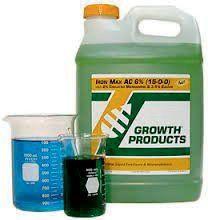


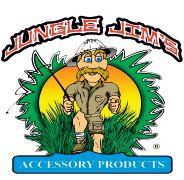
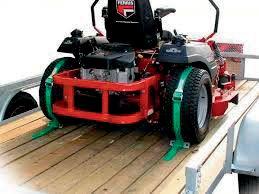
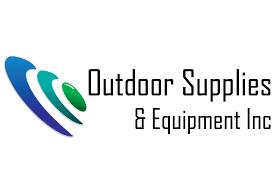
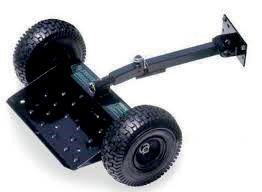
have inspections and replacements completed by a rubber track compact track loader dealer. Achieve high ROI from good service
Gaining the most out of a rubber track undercarriage requires proper operation, knowledge of how different applications affect wear, and regular cleaning and inspections. In addition, contractors should inform operators of proper operation tips and ensure they clean and inspect the tracks regularly.
Proper care can prevent problems and lengthen track life, which keeps costs low. Teach and practise careful operation and take a few minutes every day for cleaning and inspection – small tasks that will often result in a high return on investment.
Buck Storlie is the testing and reliability leader at ASV LLC. His 22 years with the company give him the expertise to manage product testing, reliability and field issue resolution. He focuses on
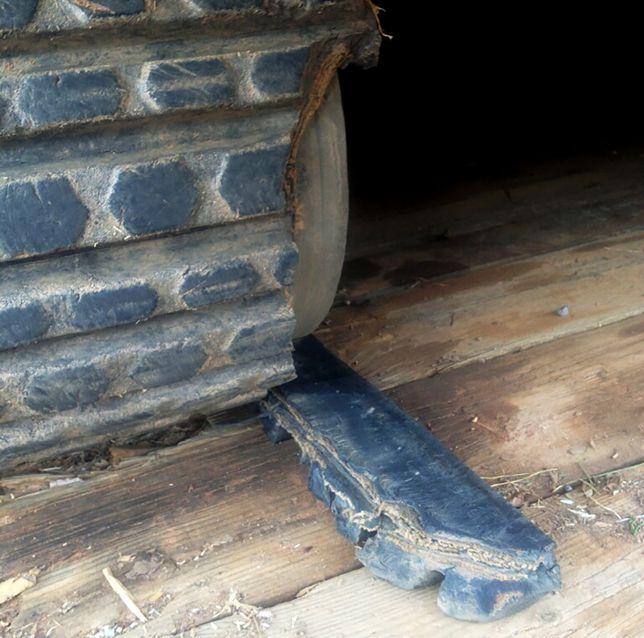
Rubber track treads accumulate cuts and missing chunks over a lifetime, but these are often cosmetic and may not affect performance. Watch for deep cuts, about four inches or larger, that dig into the core of the track where the inner cords are embedded. As an example, this track is still usable but should be monitored because the damage may worsen.




ensuring customers receive maximum productivity, durability, ROI and comfort out of their ASV machines.
ASV LLC, a joint venture between Manitex International Inc. and Terex Inc., designs and manufactures a full line of compact track and skid steer loaders primarily for the construction and forestry markets. Located in Grand Rapids, Minn., ASV LLC was created from the former ASV Inc., a company that started in 1983 and was one of the pioneers in the compact track loader industry. ASV LLC designs and manufactures compact track loaders and skid steers under the ASV brand. ASV builds its compact track loaders using unique and patented Posi-Track undercarriage technology that provides exceptional traction on soft, wet, slippery, rough or hilly terrain. For more information: ASV LLC, 840 Lily Lane, Grand Rapids, MN 55744; call 1-800-205-9913; fax 218-327-9122; sales@asvllc.com; www.asvllc. com; www.positrack.com; Facebook.
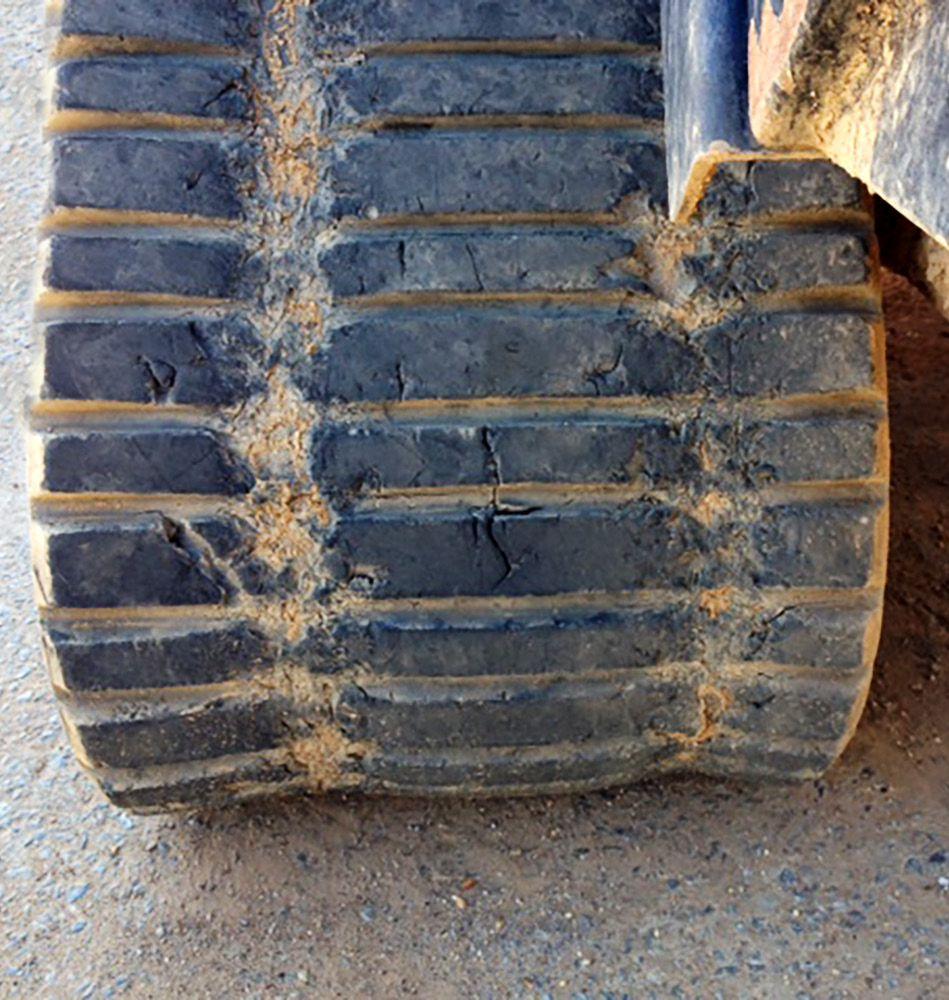


Health & Safety
By the CCOHS
The Canadian Centre for Occupational Health and Safety (CCOHS) promotes the total well-being – physical, psychosocial and mental health – of workers in Canada by providing information, training, education and management systems and solutions that support health and safety programs and the prevention of injury and illness.
Mind the heat and humidity this summer
When the thermometer reads 24 degrees Celsius but it feels more like 30 degrees, you’re likely feeling the humidity. The combined effect of warm temperatures and humidity affects how hot people feel. Whether you are working outside in the summer heat or simply enjoying the outdoors, being mindful of the humidity is critical when temperatures can reach extremes. Understanding humidity and taking the necessary precautions can help prevent the risk of your body overheating and experiencing heat-related illnesses.
A humidex is used as a measure of perceived heat that results from the combined effect of excessive humidity (moisture in the air) and high temperature. Environment Canada uses humidex ratings to inform the general public when conditions of heat and humidity are possibly uncomfortable, and potentially dangerous. The body attempts to maintain a constant internal temperature of 37 degrees Celsius at all times and in hot weather sweat is produced, which cools the body when it evaporates. As the humidity in the air increases, sweat does not evaporate as readily, and stops entirely when the relative humidity reaches about 90 per cent. Under these circumstances, the body temperature rises and may cause illness.
The development of heat related illnesses depends on many factors in addition to air temperature and humidity. Wind speed or air movement, workload, radiant heat sources, and a person’s physical condition are important. Whether or not a person is acclimatized to working in a hot environment is also important. New workers should acclimatize to working in hot conditions by slowly increasing the duration and level of heat exposure. It can take six to seven days for the body to fully adapt or acclimatize to a new thermal environment. Rushing this process can lead to heat-related illnesses.

Serious heat-related illness can occur by ignoring humidity levels
Heat-related illnesses
• Heat rash, or prickly heat, occurs when blocked sweat glands become inflamed. This painful rash reduces the body’s ability to sweat and to tolerate heat.
• Heat cramps are painful spasms of the muscles. The muscles used in doing the work are most susceptible. The spasms are caused by the failure of the body to replace its lost body salts and usually occur after heavy sweating.
• Heat exhaustion results when the body loses large amounts of fluid by sweating during work in hot environments. The skin becomes cool and clammy. Symptoms include profuse sweating, weakness, dizziness, nausea, and headaches.
• Heat stroke is the most serious condition and requires immediate attention. The body temperature becomes very high (even exceeding 41 degrees Celsius). Complete or partial loss of consciousness is possible. Sweating is not a good warning sign of heat stress as there are two types of heat stroke:
• 1. Classical where there is little or no sweating (usually occurs in children, persons who are chronically ill, and the elderly)
• 2. Exertional where body temperature rises because of strenuous exercise or work and sweating is usually present.
How to determine the humidex
During the summer, radio and television weather broadcasts often include the humidex readings for their broadcast areas. Environment Canada also posts the relative humidity for all of Canada on its website.
If you know the temperature and relative humidity, you can determine the humidex using a humidex from temperature table such as the one found in the Humidex Rating and Work fact sheet. For example, if the temperature is 30 degrees Celsius and the relative humidity is 70 per cent, the humidex rating is 41.This level is considered a level of great discomfort and exertion should be avoided.
Tips for avoiding overheating
• Monitor environmental conditions and allow self-limiting of exposure when necessary. If this is not possible, adjust work/rest cycles accordingly.
• Avoid sun exposure. Take frequent breaks in a cool or well-ventilated area to get out of the sun and heat.
• Don’t be afraid to sweat. Sweating is the body’s most effective cooling mechanism.
• Take time to acclimatize to new working conditions and temperatures.
• Stay hydrated. Drink plenty of water in hot weather conditions, on average, one litre every hour.
• If possible, postpone strenuous work to a cooler time of day.
• Wear light clothing.
• Consider the use of cooling vests. Workers should be trained to recognize the signs and symptoms of heat stress and how to avoid them. An emergency action plan that includes procedures for providing affected workers with first aid and medical care should be in place.
Aerating turf with little or no surface disruption

Sports fields, golf courses and lawns require aerification to relieve soil compaction and increase turf health. More than core aerification or solid tine aerification, the Air2G2 injects air through the root zone, reaching down 12 inches into the soil profile and laterally
injecting air that fractures the soil substrate.
The fracturing immediately relieves compaction, quickly allows water to drain and promotes immediate gas exchange. Most importantly, it does so with little to no disturbance to the turfgrass surface.
The Air2G2 aerification machine is seen as a revolutionary product and was the winner of the 2015 Innovation Award from the Sports Turf Managers Association. The technology’s benefits include compaction relief, increase in porosity, water drainage enhancement, forced gas exchange, microbial activity encouragement and improved turf health.
For more information, visit www.air2g2.com.

New saw blades designed to reduce waste
DeWalt has introduced its new Breakaway reciprocating saw blade that feature a two-blades-in-one design. Operators are able to break away the used section of the blade and then reinsert the unused blade section back into the saw. The Breakaway feature allows for maximum blade use without compromising performance.
The saw blades come in two lengths: six inch (DWABK461418) and nine-inch (DWABK491418) diameters.





for contractors to check the fuel tank cap or use a funnel to refuel because propane mowers use a closed-loop fuel system, which virtually eliminates the opportunity for spills.
With propane mowers, contractors also don’t need to worry about mowing times and schedules because the equipment can be used throughout the day, keeping customers happy with on-schedule service instead of delays. The ability to operate even in times of high air quality indexes, and using equipment that produces fewer emissions, can also be a way for contractors to become eligible for energy-efficient bids and market their business to green-minded customers.
The nine-inch blades break into six-inch blades and are ideal for cutting materials up to two inches in diameter. At .042-inch thickness, the reciprocating saw blades have been designed with a thick kerf for durability. The blades are engineered with a 14/18 TPI (teeth per inch) variable tooth pattern for optimized cuts in a variety of metal cutting applications.
features the new system will extend their recommended oil change intervals from 100 to 500 hours, decreasing the time and costs associated with conducting oil changes.
The Vanguard Oil Guard System is a factory-integrated technology and not an aftermarket add-on. Vanguard’s three-year commercial engine limited warranty applies.
1
12/16/15 3:36 PM Page 1
Changing simple daily practices can go a long way to limiting emissions during the summer months when temperatures increase and ground-level ozone can become dangerous. These practices can help protect operators while still meeting the expectations of customers. Or, contractors can transition to using commercial propane mowers and remove some of the hassles and worries from daily equipment use.
Jeremy Wishart is the deputy director of business development for the Propane Education & Research Council. He can be reached at jeremy.wishart@propane.com.

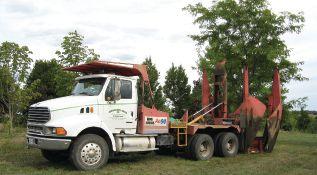
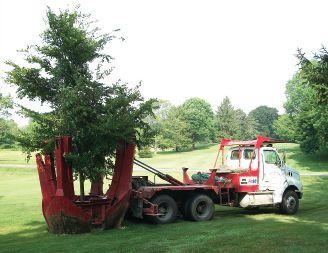
There are acres of trees to choose from Hwy. 59, 10 km South of Woodstock, Ont. 593806 Hwy. 59
Phone (519) 424-2180 or 1-800-387-0246 www.oxfordinstashade .com
Common applications for the Breakaway blades include cutting galvanized pipe, copper pipe, conduit, metal studs, EMT, and other metals. They are designed for the user who is tired of throwing away half-used blades. They are available this spring wherever DeWalt products are sold.
For more information, visit www.dewalt.com.
Engines’ new system allows more time between oil changes
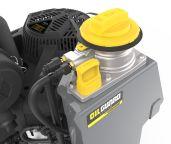
Briggs & Stratton has introduced the Vanguard Oil Guard System for its 810cc EVI V-Twin and Big Block commercial engines, offering productivity gains and allowing for 500-hour oil change intervals.
The system was developed in conjunction with Ferris, a Briggs & Stratton brand. The technology was first launched on 2017 Ferris mowers. Additional commercial applications for the system are currently being explored by Vanguard.
The Vanguard Oil Guard System works by continuously exchanging oil between the engine and a five-quart external oil reservoir. The design protects oil from thermal breakdown, extending oil maintenance intervals and producing a cooler-running engine. Having direct access to the oil filter and drain tube makes for quicker, easier and mess-free oil changes.
Contractors operating commercial equipment with a Vanguard engine that
For more information, visit www.vanguardengines.com.
Poa annua herbicide now has more options
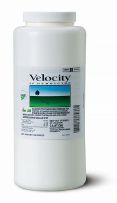
Golf course superintendents and sod growers have new options for using Velocity® herbicide to effectively transition annual bluegrass (poa annua) from turf with several updates to the product’s label on rates and timing. Velocity (bispyribac sodium), by Valent Canada Inc., is a post-emergent herbicide registered in Canada that selectively reduces annual bluegrass populations in turf. New label updates provide added flexibility for rates and timing as part of a planned program to convert poa-infested turf back to creeping bentgrass, perennial ryegrass, Kentucky bluegrass or tall fescue.
Velocity now has a wider window from May 15 to Oct. 15 to extend fall application by an addition month. An application program for use on creeping bentgrass and perennial ryegrass has been added that includes a broader rate range (16 g/ha-31 g/ha). The option of a 16 g/ha rate is designed to slowly reduce, but not eliminate, the population of annual bluegrass over time. There are also new options for application timing, depending on the transition program used, that include applying Velocity at 5-10, 14, 21 and 28-day intervals.
With the new label updates, Velocity now has five annual bluegrass conversion programs based on infestation level and rate of transition.
Full program details are outlined at www.nufarm.ca.
Storm Seeker headlamps offer brighter beams for truck plows
The new Storm Seeker halogen headlamps from SnowEx offer significant durability and illumination improvements for users of SnowEx truck plows.

The Storm Seeker headlamps are uniquely designed to reliably deter water ingression. The reflector-to-housing seal features a built-in vent that allows moisture to exist, but not enter. In addition to fighting water ingression, an improved lens seal uses dual adhesive bead channels to ensure secure attachment of the lens. Using H9/H11 bulbs, the low beams are 17 per cent brighter and 6 per cent wider to put down more light in front of the plow and to the sides for safer plowing. High beams are 36 per cent brighter and illuminate 35 per cent farther.
For more information, visit www.snowexproducts.com.

New utility vehicle combines comfort, control and versatility
The all-new Toro Workman GTX utility vehicle is one of the most versatile grounds and turf crossover vehicles in its class. Combining superior comfort, control and versatility, the Workman GTX provides all the features to help tackle a multitude of tasks on and around the golf course.

Equipment managers are able to select from several models to match the right vehicle to their specific needs. Among these options are four- and two-seat configurations, a variety of front and rear attachments for garbage cans, hose reels or walk spreaders, and a number of flatbed options to haul even the bulkiest materials. With more than 300 configurations to fit almost any application, the Workman GTX is a highly versatile and cost-effective machine.
The Workman GTX is available this spring. To learn more about the Workman GTX, visit www.commercialvideo. toro.com/watch/gYniZ3QAVvNL2Tg4suT5Lg.
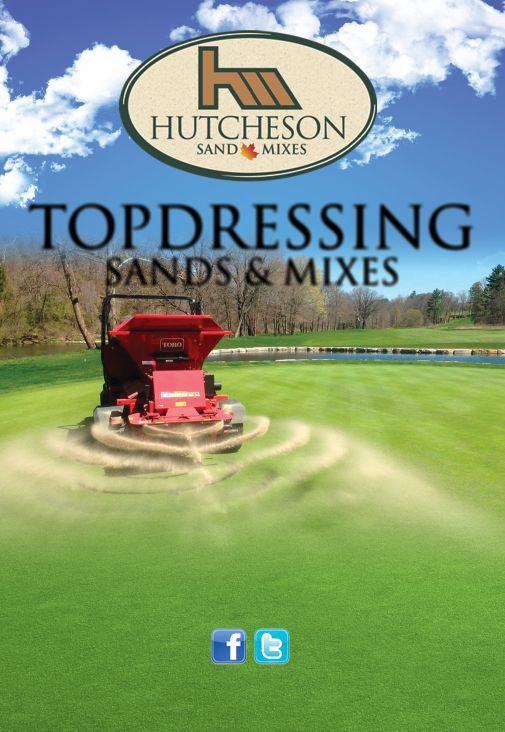



you

AD INDEX
Advanced Equipment Pg. 35
Alliance Agri-Turf Pg. 41
Andersons, The Pg. 19
Aquatrols Pg. 7
Bartlett Tree Experts Pg. 41
Buffalo Turbine Pg. 39
Echo Pg. OBC
Ecolawn Pg. 27
Exmark Pg. 20, 21
Fish Farm Supply Co. Pg. 37
GIE+Expo Pg. 37
Greenhorizons Sod Farms Pg. 29
Gro-Bark Pg. 23
Hutcheson Sand Pg. 39
John Deere Pg. 5, 13
Kubota Pg. IBC
Land Pride Pg. 31
Neudorff Pg. 17
Ontario Seed Co. Pg. 31, 41
Ontario Turf Aeration Pg. 41
Outdoor Supplies & Equipment Inc. Pg. 33
Oxford Insta-Shade Pg. 38
Pickseed Pg. 41
Practical Turf Care Pg. 41
Progressive Turf Equipment Inc. Pg. 25
Quality Seeds Pg. 41
RTF Pg. 30
Shindaiwa Pg. 11
Stihl Pg. IFC
Toro Pg. 14, 15
Turfgrass Canada Pg. 41
Zander Sod Co. Limited Pg. 27, 34
Parsons joins Lawn Life team
Former Engage Agro professional turf division sales and accounts manager Justin Parsons has joined Lawn Life Natural Turf Products as assistant general manager.
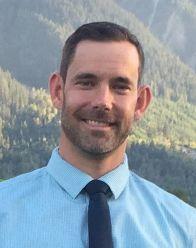
“We’re very excited to have such a respected golf and turf industry individual joining our team,” Lawn Life president Richard Reed said. “Lawn Life has experienced tremendous growth over the last five years, and with the addition of Justin we can expand our presence in the professional Canadian turf market as well as pursue retail and U.S. turf opportunities.”
Parsons will take on a managerial and product development role, assisting Reed with bringing new technology to the lawn care, golf and sports turf sectors.
“With Justin coming aboard, along with sales manager Ken Pavely, we are well positioned to keep moving ahead,” Reed said.
Parsons, who holds both a journalism degree from Ryerson University and a turfgrass management diploma from Seneca College, spent his first 10 years in the turfgrass industry with several golf course maintenance departments in the Greater Toronto Area, including five years as an assistant superintendent. He spent the past six years with Engage Agro, beginning as a technical sales representative before stepping up into the role of sales and accounts manager of the professional turf division.
He has also kept active with the Ontario Golf Superintendents Association’s OnCourse magazine for the past 12 years, including five as editor. Additionally, he has been a director for the Ontario Turfgrass Research Foundation for the past four years.
O NTAR I O SEED
C O M PA NY LTD.
Over120 Yearsof Growing Service
Over 125 Years of Growing Service
• Turf Seed
• TurfSeed
•PlantProtectants
•BaycoGolf Supplies
• Bayco GolfSupplies
• Bayco Golf Supplies
• TurfSeed•Syngenta,Bayer&EngageAgro •BaycoGolfSupplies•NutriteFertilizers •AquaAidSoilProducts
• Turf Seed • Syngenta, Bayer & Engage Agro
• Nutrite Fertilizers
• Nutrite Fertilizers
•TurfChemicals •NutriteFertilizers
Servingturfmanagers provincewide
• Aqua Aid Soil Products
David Schmelefske• KentMcDonald • Trevor Hunter • Victor Freiberg • Ken Graham www oscseeds.com•E-mail:seeds@oscseeds.com www.oscturf com www.oscturf.com•email:seeds@oscseeds.com

P.O.Box7,Waterloo,Ont.N2J3Z6
P O Box 7, Waterloo, Ont N2J 3Z6
330Phillip St., P.O.Box 7,Waterloo, Ont.,N2J3Z6
Tel:(519)886-0557,1-800-465-5849Fax:(519)886-0605
Tel:(519)886-0557, 1-800-465-5849Fax: (519)886-0605
Tel: (519) 886-0557, 1-800-465-5849 Fax: (519) 886-0605


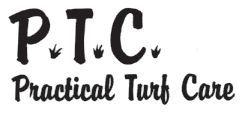

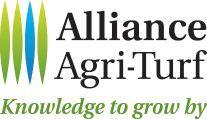





Duffer
By Rod Perry
The disappearing art of everyday etiquette
Thou shalt not play Pokemon in church. Did you hear about this one? A 22-yearold Russian man was recently convicted of “inciting religious hatred” after he was caught playing Pokemon Go in an Orthodox cathedral in Yekaterinburg during a service of the Church of All Saints.
The Russian church and state obviously take playing video games during a church service very seriously. It’s something that shouldn’t be done in any church in any country, and this guy was potentially facing a seven-year prison sentence for his lack of better judgment. As it turned out, he was handed a 3½-year suspended sentence.
The presiding judge said the man not only insulted Orthodox Christians, but Muslims as well, and his actions sent a message of hate aimed at the church and its leader.
I’m no expert in how religion, politics and the law work together in foreign countries, but I don’t think the law would ever get involved in something like this in Canada. A member or two of the congregation would likely take the individual aside afterwards and tell him that playing video games in church is not tolerated. The culprit would hang his head in shame and sheepishly leave the church, perhaps never to return.
The question I’d like answered is what is a 22-year-old doing playing Pokemon? Isn’t Pokemon kid stuff, something that would interest eight to 13-year-olds? Is this guy still clinging to his childhood?
There are many things you simply don’t do in church. Playing video games now moves to the top of the
list. I always thought making change in the collection plate was the worst possible thing anyone could do in church. “Gee, all I’ve got on me is a 50. I need to pick up bread and milk afterwards, so I guess I can put in my 50 and take out a five and a 10.”
The next worst thing one could do in church is fall asleep during the sermon. Apparently this happens more frequently than we think. Once someone falls asleep in church and then proceeds to snore, then he’s really overstepped his bounds.
There’s a lot to be said about every day etiquette. A church is sacred ground and etiquette is particularly important. In the end, common sense must prevail whether the setting is a church, the office, a golf course or pretty much anywhere else.
pent-up gas right then and there, but his wife wasn’t the least bit impressed. Fortunately, I wasn’t within nose shot of him, but it did register high on the decibel scale.
There was a rather amusing feature in the latest issue of Golf Digestthat looked at golf etiquette in its various forms, from such common breaches as not fixing ball marks to the absurd, including taking a leak in the middle of the fairway. I have, unfortunately, witnessed the latter and secretly hoped at the time that an errant golf ball might strike the offending appendage.

I once saw a guy change his shirt at the office because he had spilled something on it. Instead of discreetly slipping into the bathroom to take care of his wardrobe change, he thought it was a good idea to swap out shirts from within his own cubicle. Never mind that one side of his workspace was completely open and that he was in full view of about 25 co-workers, half of whom were female. This guy wasn’t exactly fit, either, if you know what I mean, and undoubtedly most of the women in the office had that vision forever etched in their minds.
The fact that he kept a spare shirt at work suggested to me that soiling his clothes was a common occurrence.
A number of years ago, I was sitting in the emergency waiting room at the hospital when a middle-aged couple headed toward the exit. A few steps away from the door the man decided to let one rip. I wasn’t sure if this was related to his hospital visit and he badly needed to release some
I always thought making change in the collection plate was the worst possible thing anyone could do in church
Most golf courses have restroom facilities situated in various locations throughout the property, even if they’re just portable outhouses. They’re there for a reason. If you really have to go, discreetly hide behind a large tree in a heavily wooded area. But this applies only to men golfing with men. I’ve seen guys playing in mixed foursomes who won’t hesitate to stand behind a tree to empty their bladders, and, even though they themselves might be hidden from sight, their streams are in full view of their female playing partners.
Worst of all is that 18th green handshake with your playing partner who just whizzed in the bushes five minutes earlier. You know you have to shake his hand because it’s proper etiquette, not to mention good sportsmanship. But you also know where his hand was five minutes ago and that he had no access to soap and water. So you bite the bullet and observe proper golf etiquette. And then when he’s not looking, you reach into your golf bag for your handy vial of hand sanitizer.
There is etiquette and then there is plain common sense.
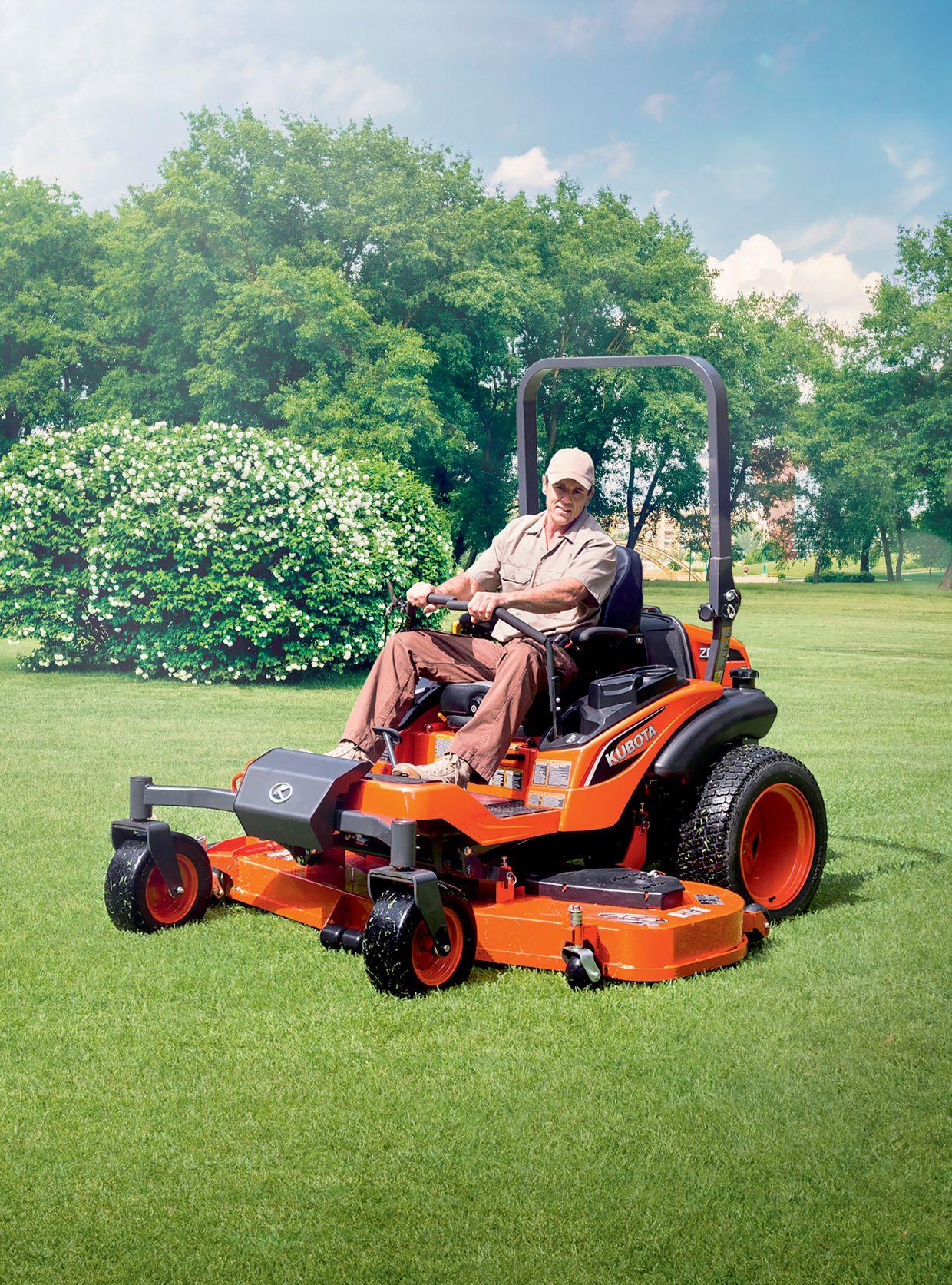

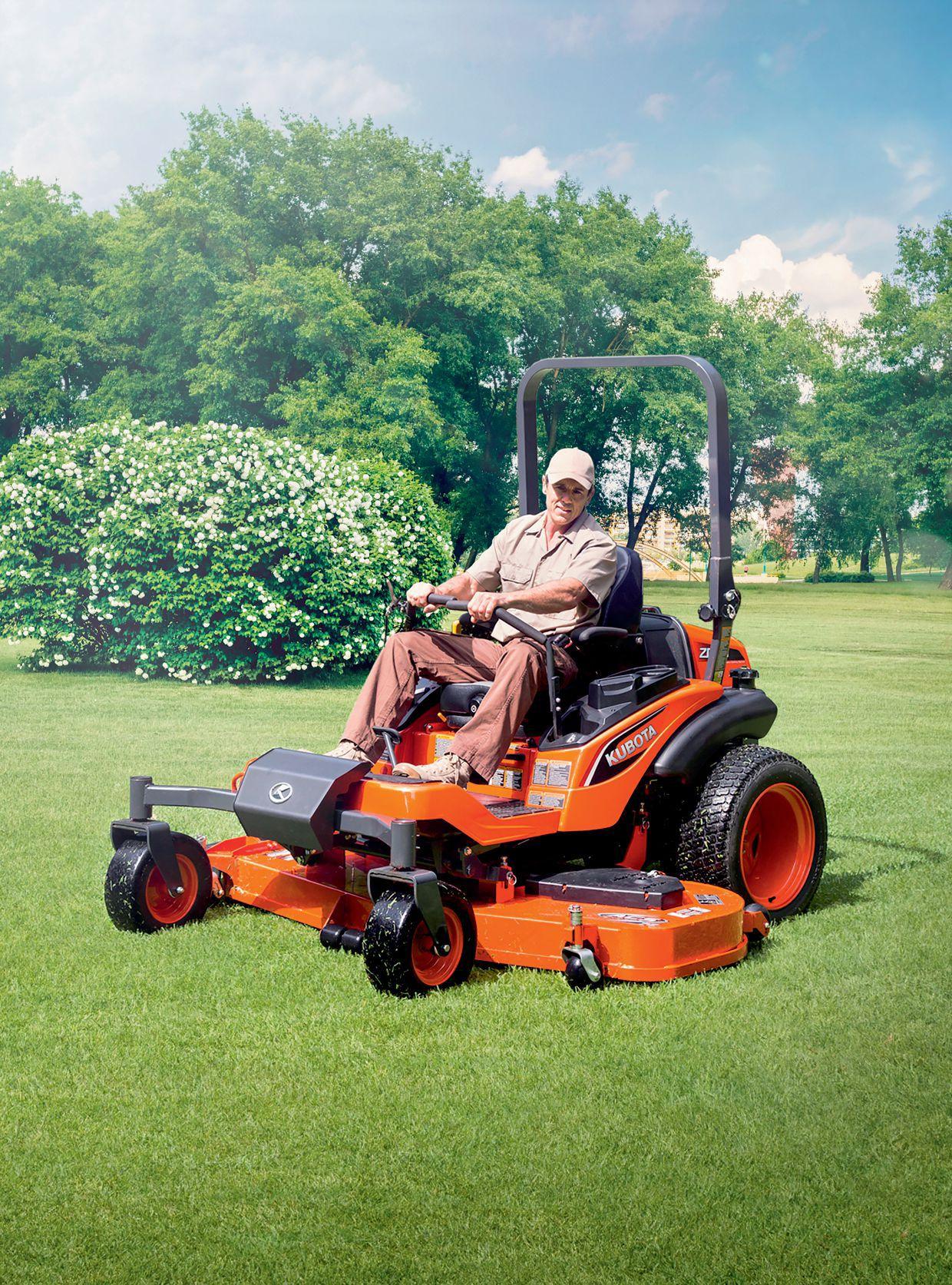
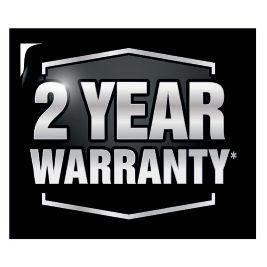

Whatever your mowing job, our ZD Series were designed to mow. Engineered with a lower center of gravity means slopes and uneven grounds are no problem. Best of all, our zero-turn mowers are also incredibly fuel efficient so you can expect to see more green—in the field and in your pocket.
kubota.ca |
ACS KUBOTA PRO DECK
The airflow inside the ACS Kubota Pro Deck has been optimized for faster, more efficient cutting and discharge resulting in reduced power consumption, and increased fuel efficiency, which means you’ll get better work performance—up to 27% better.**
**Kubota in-house test results



